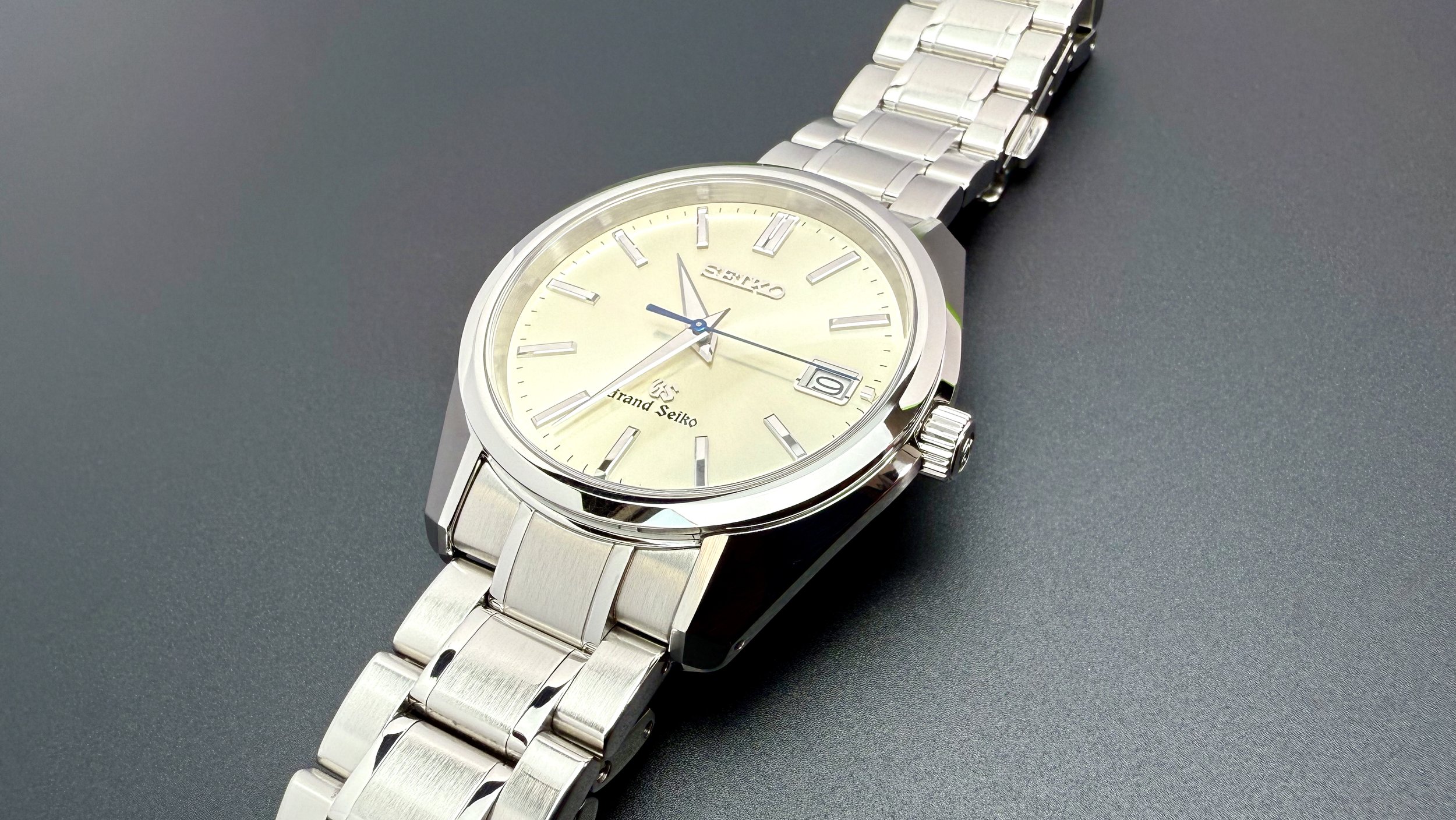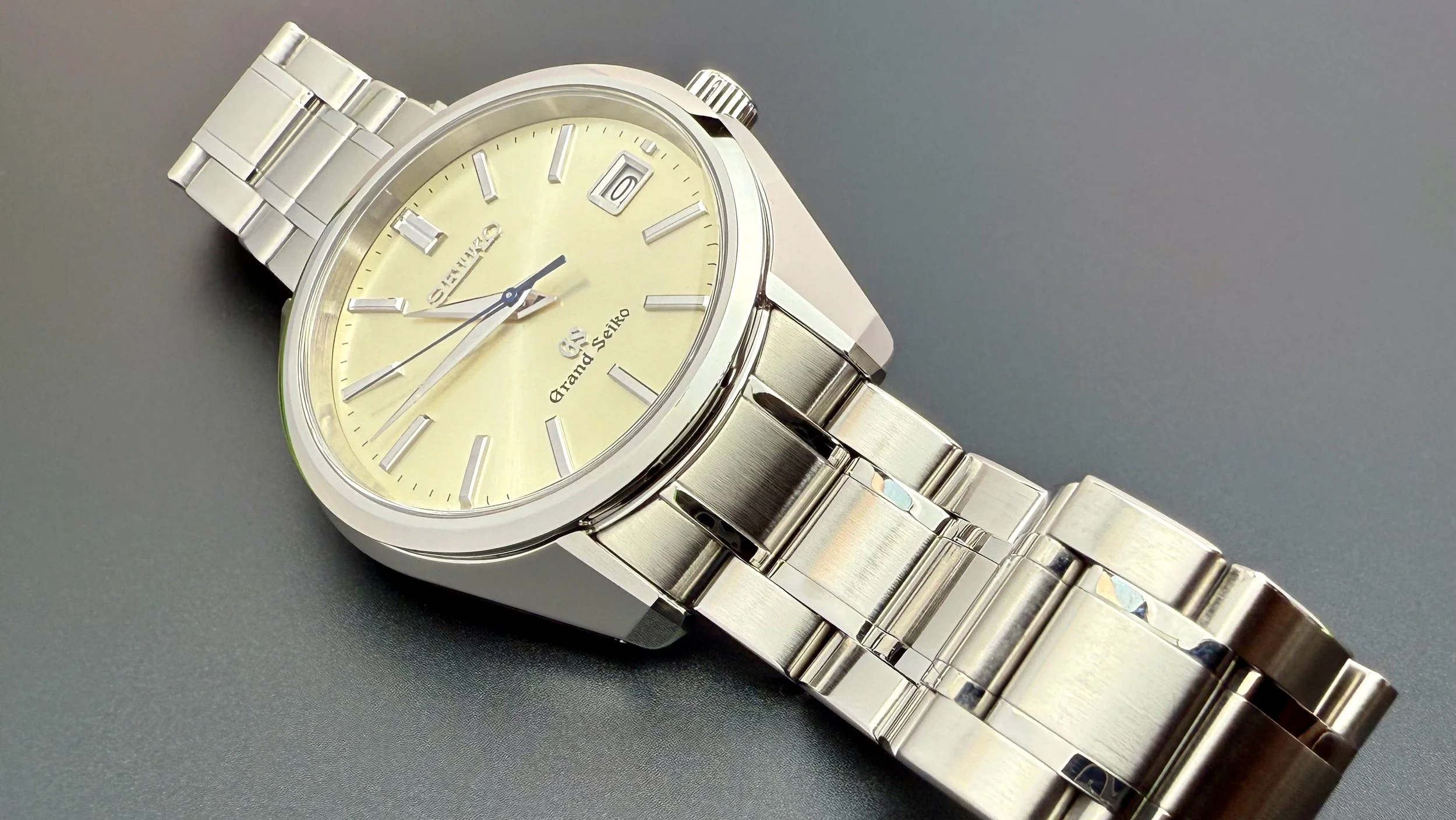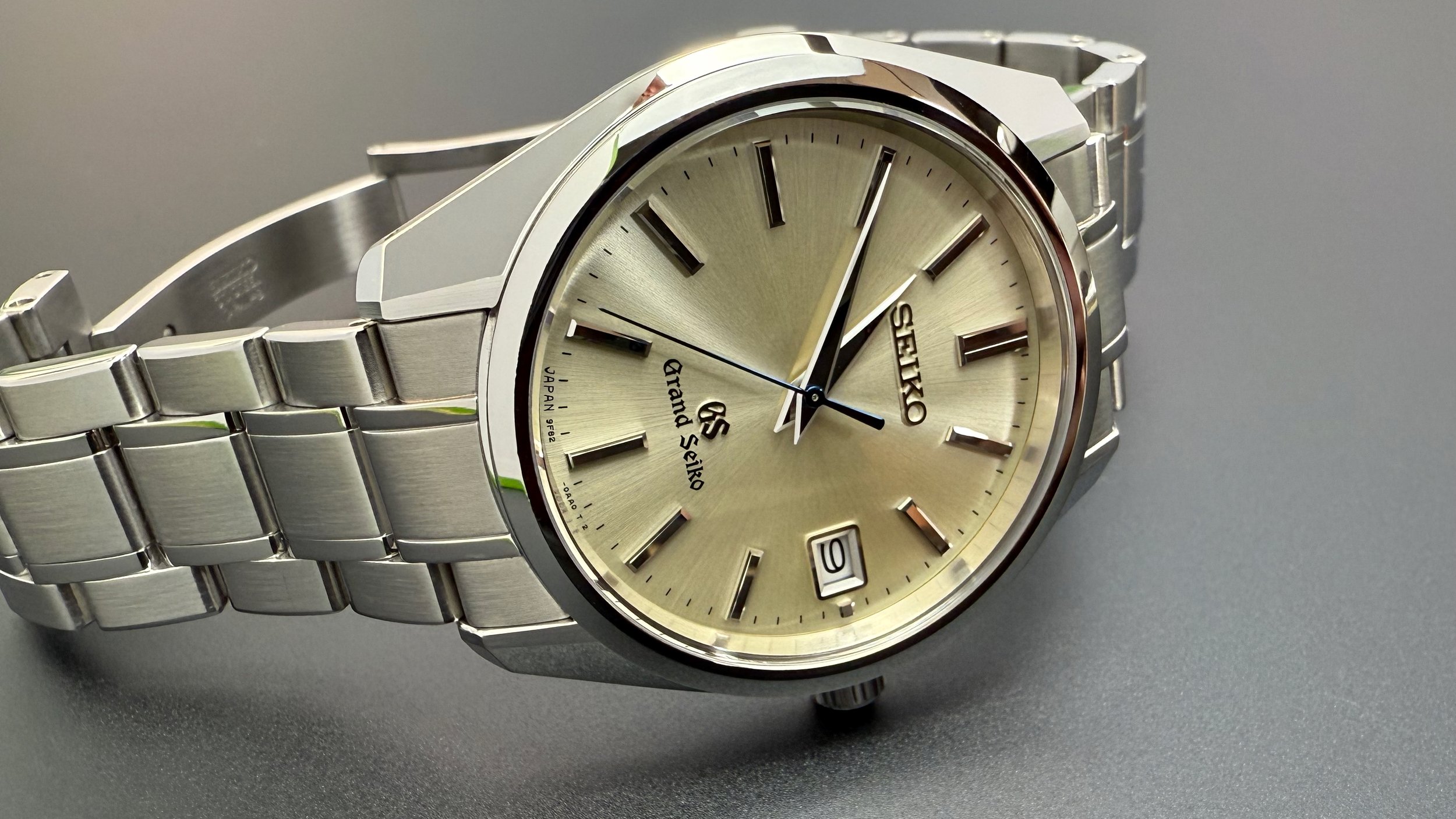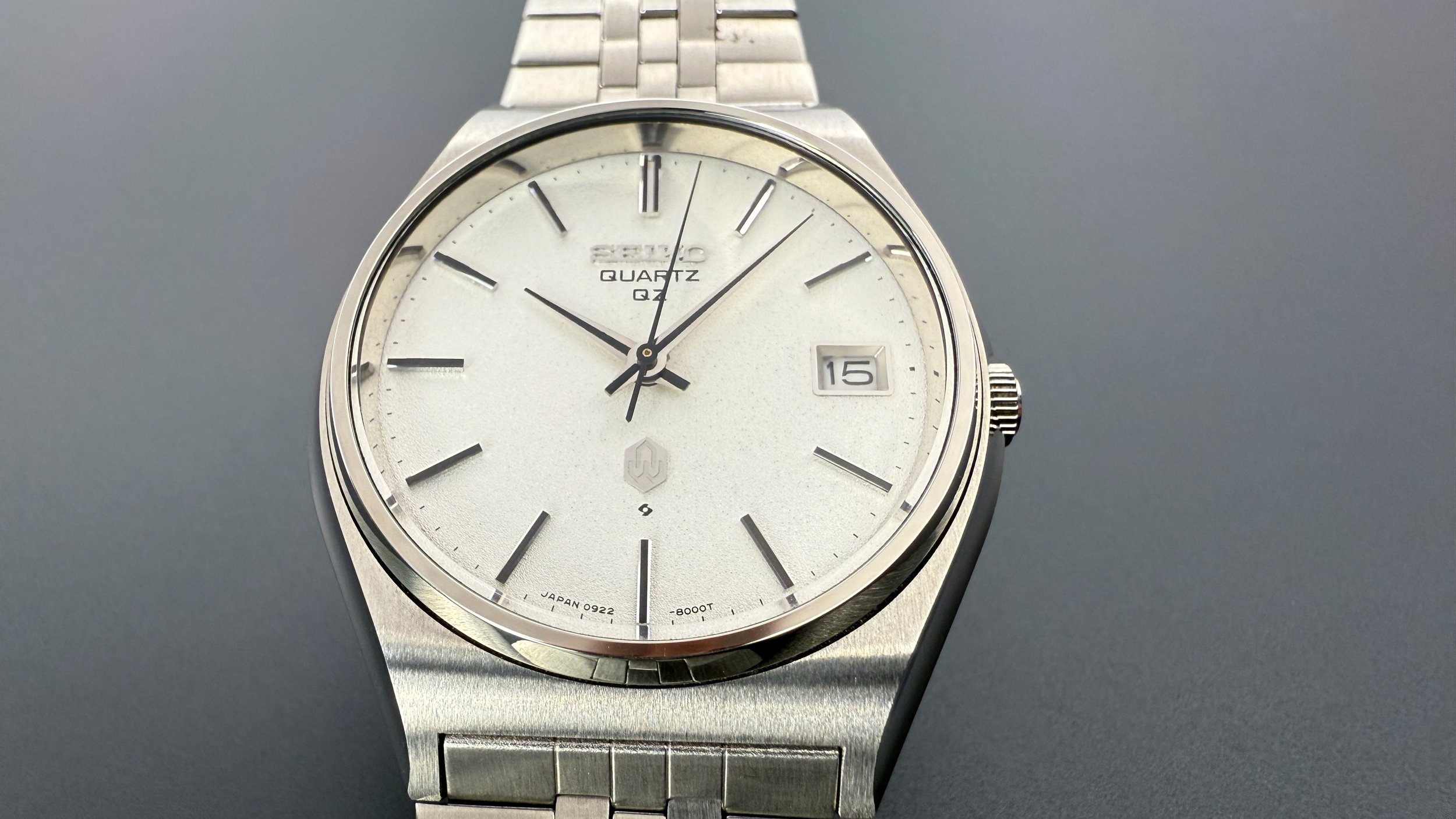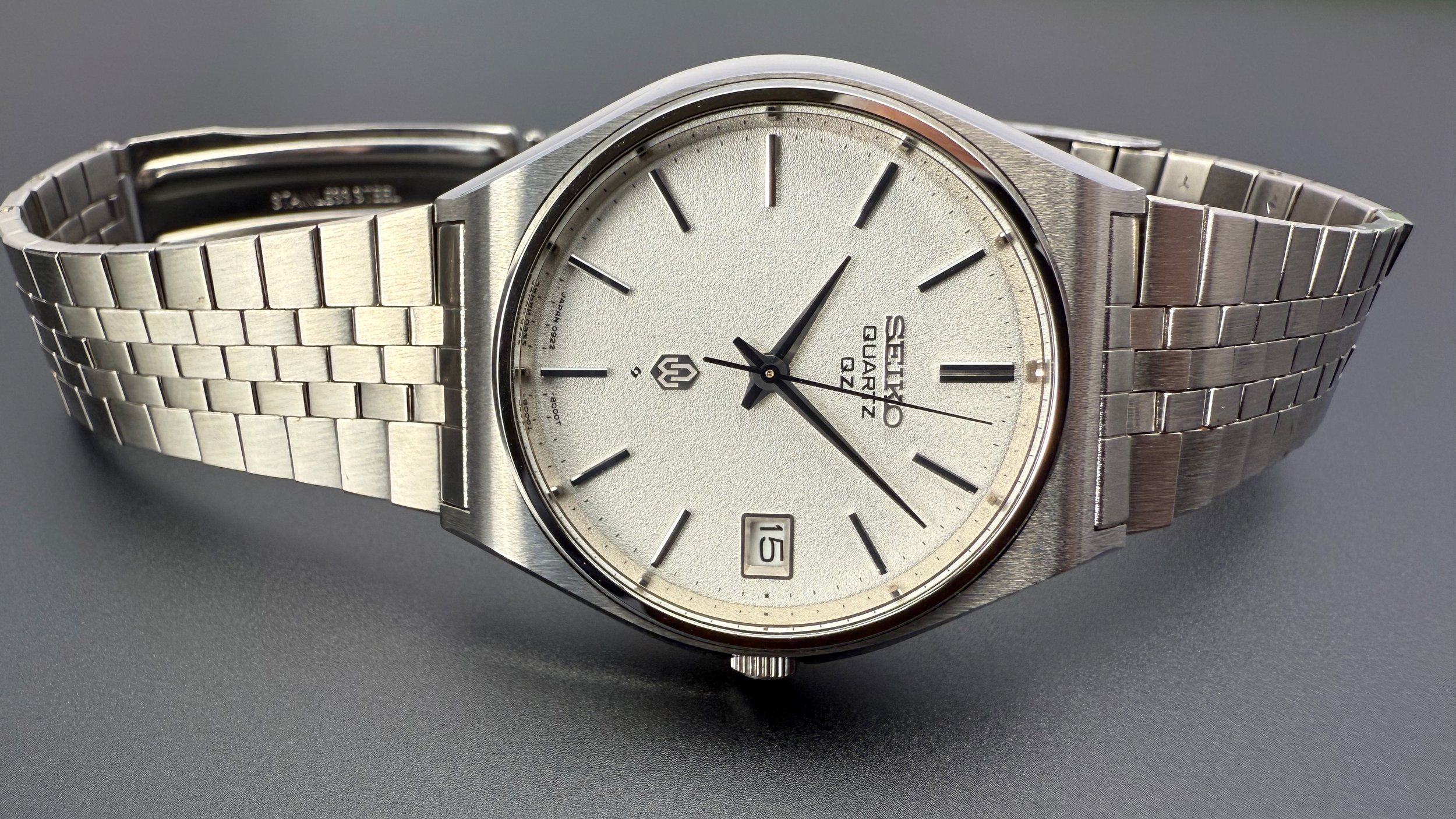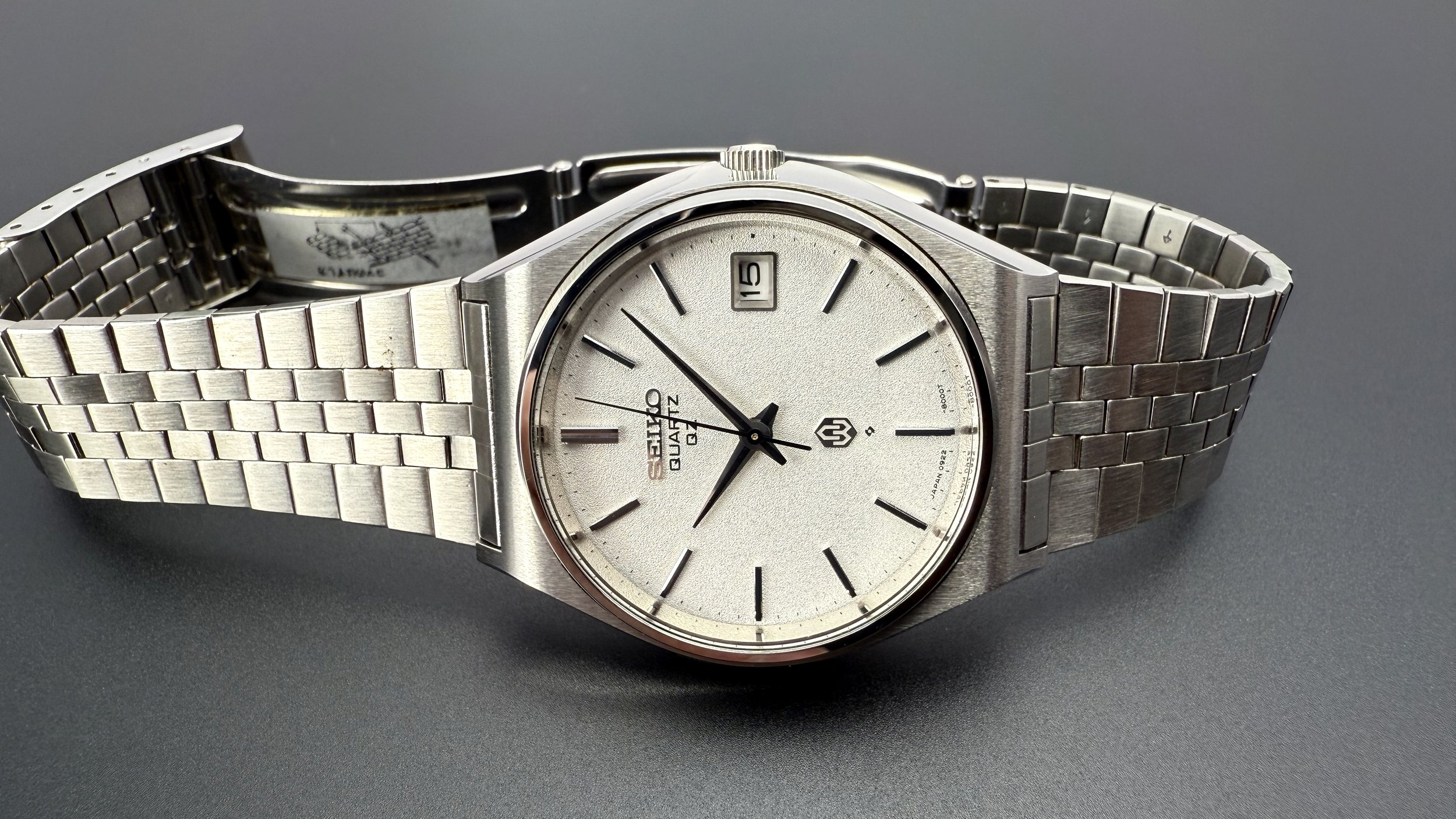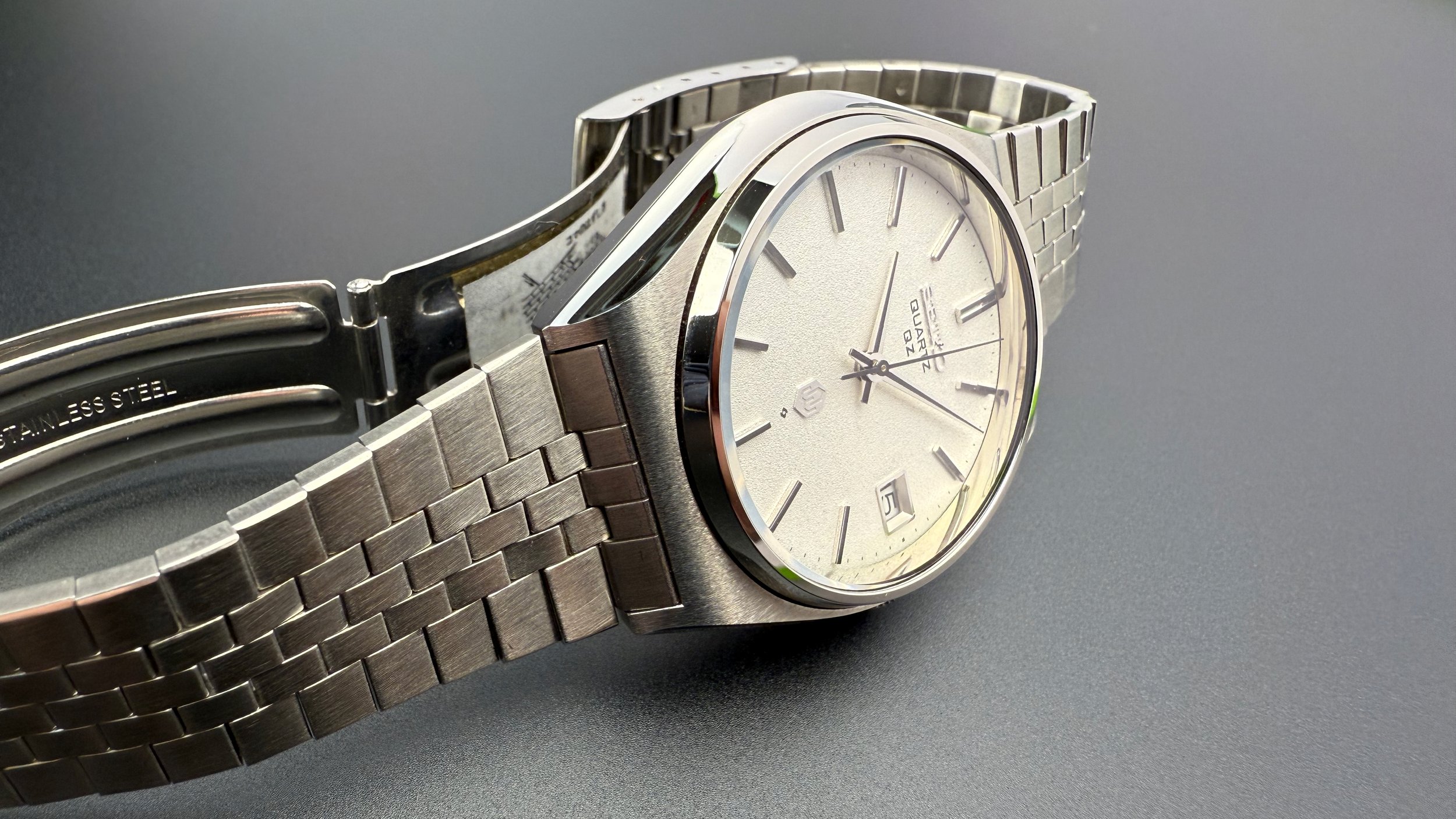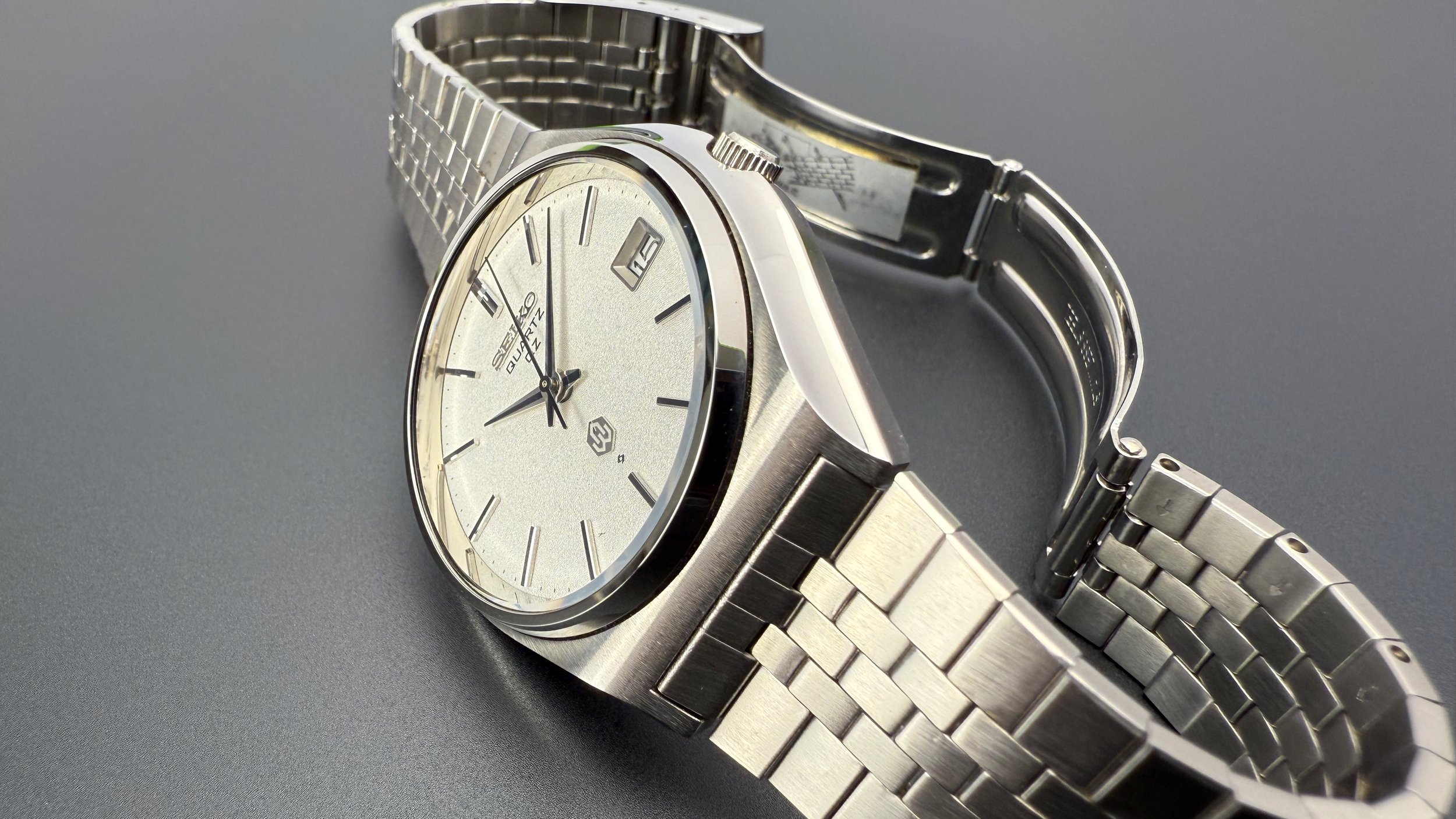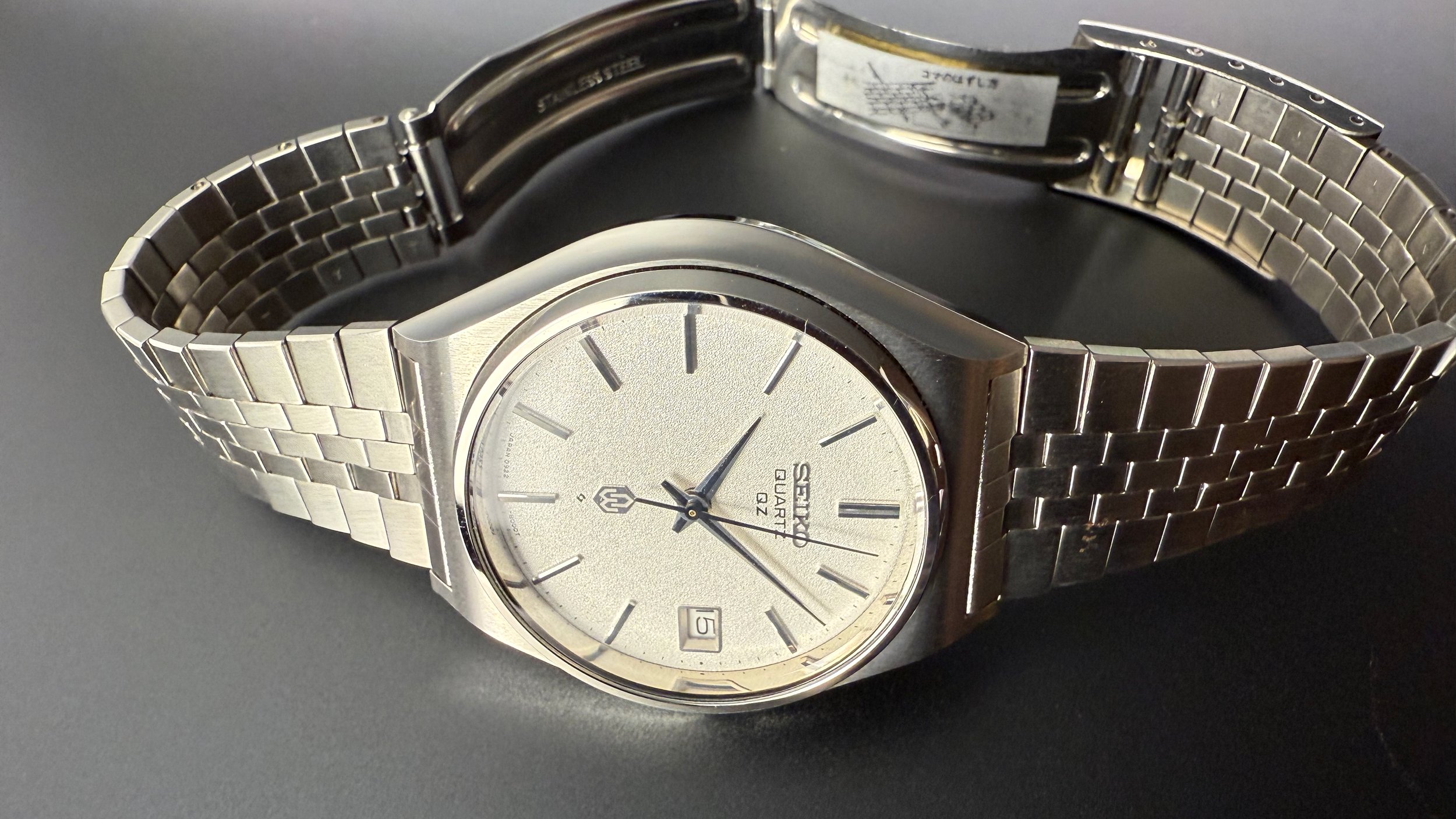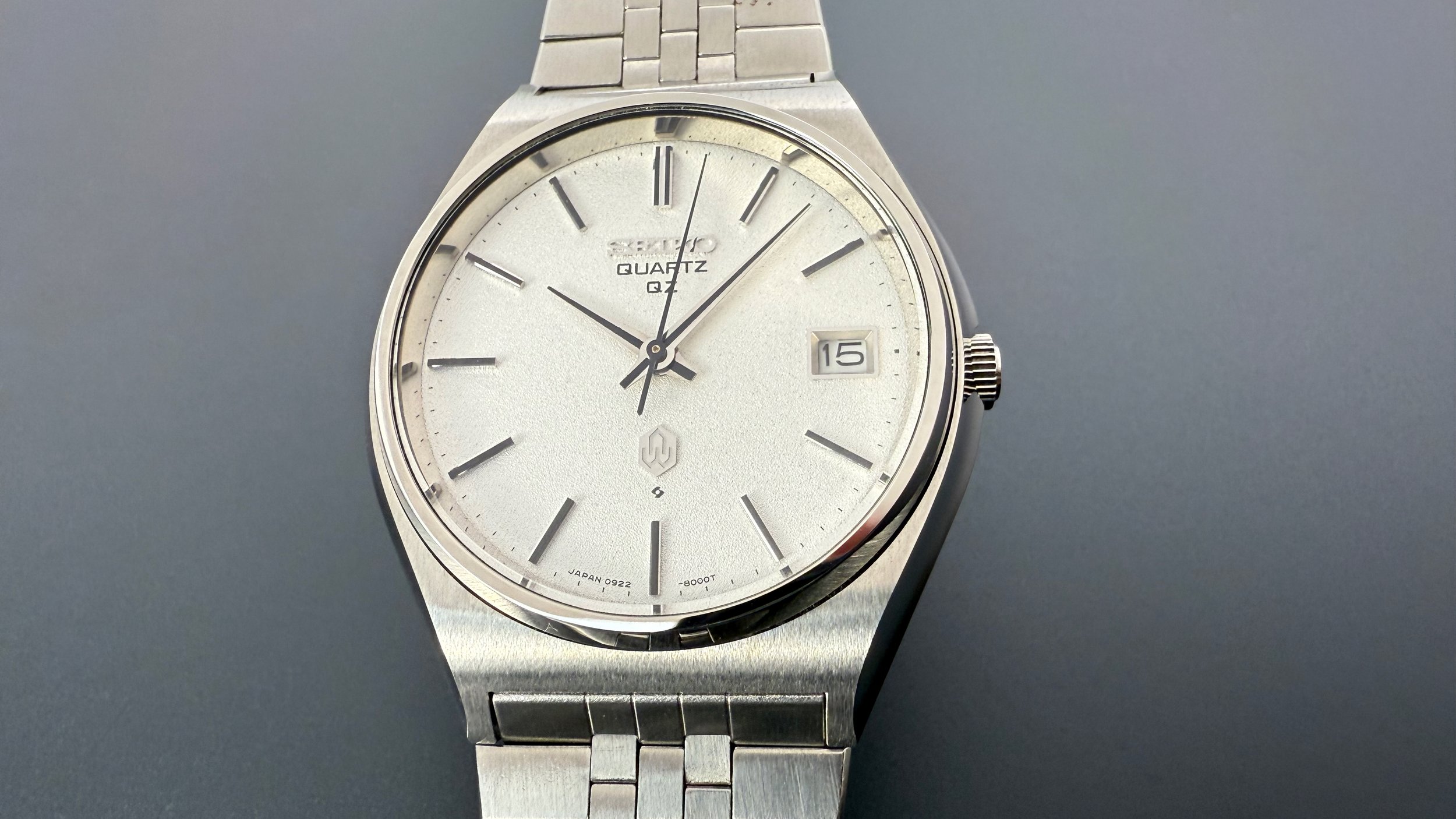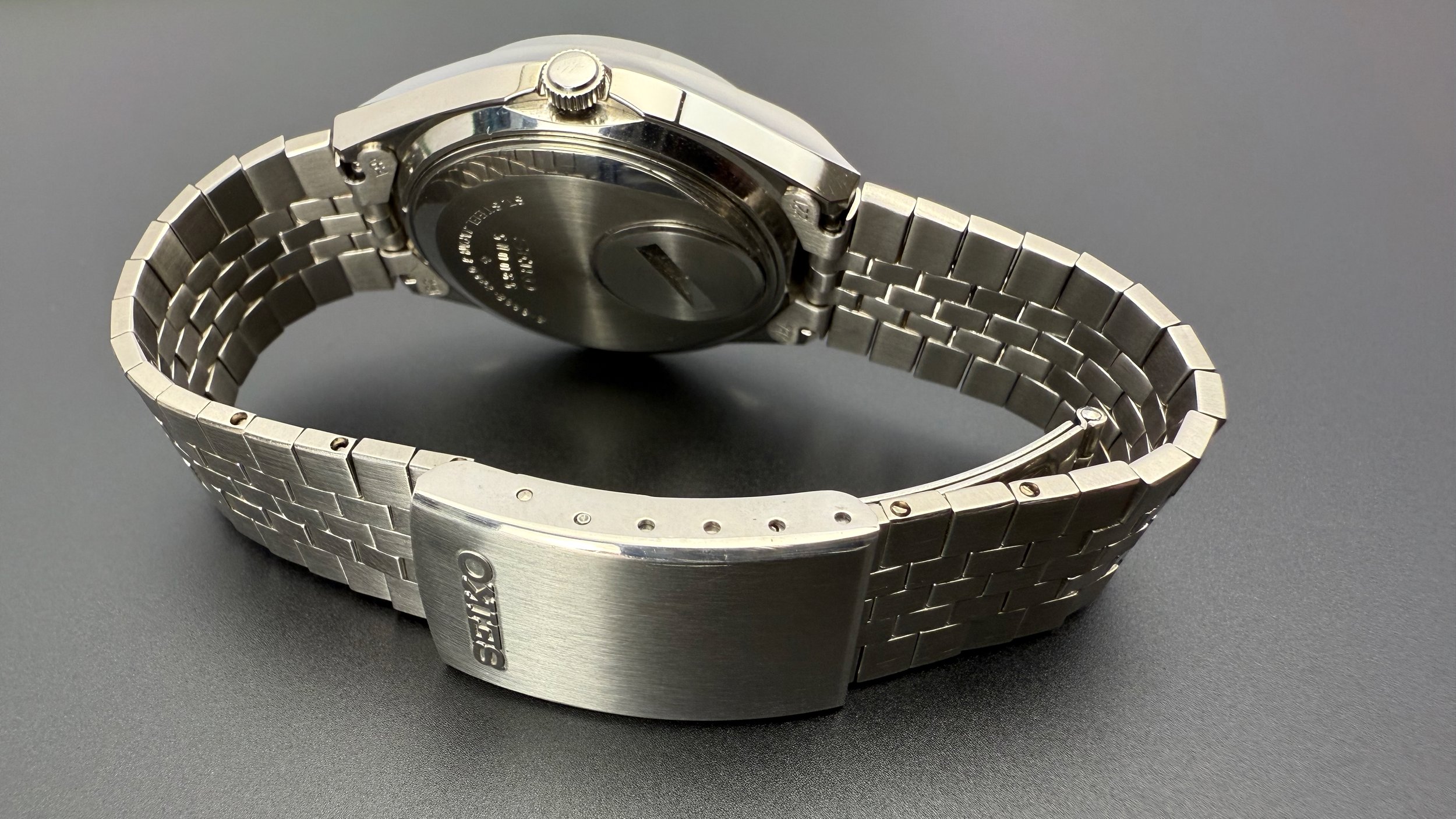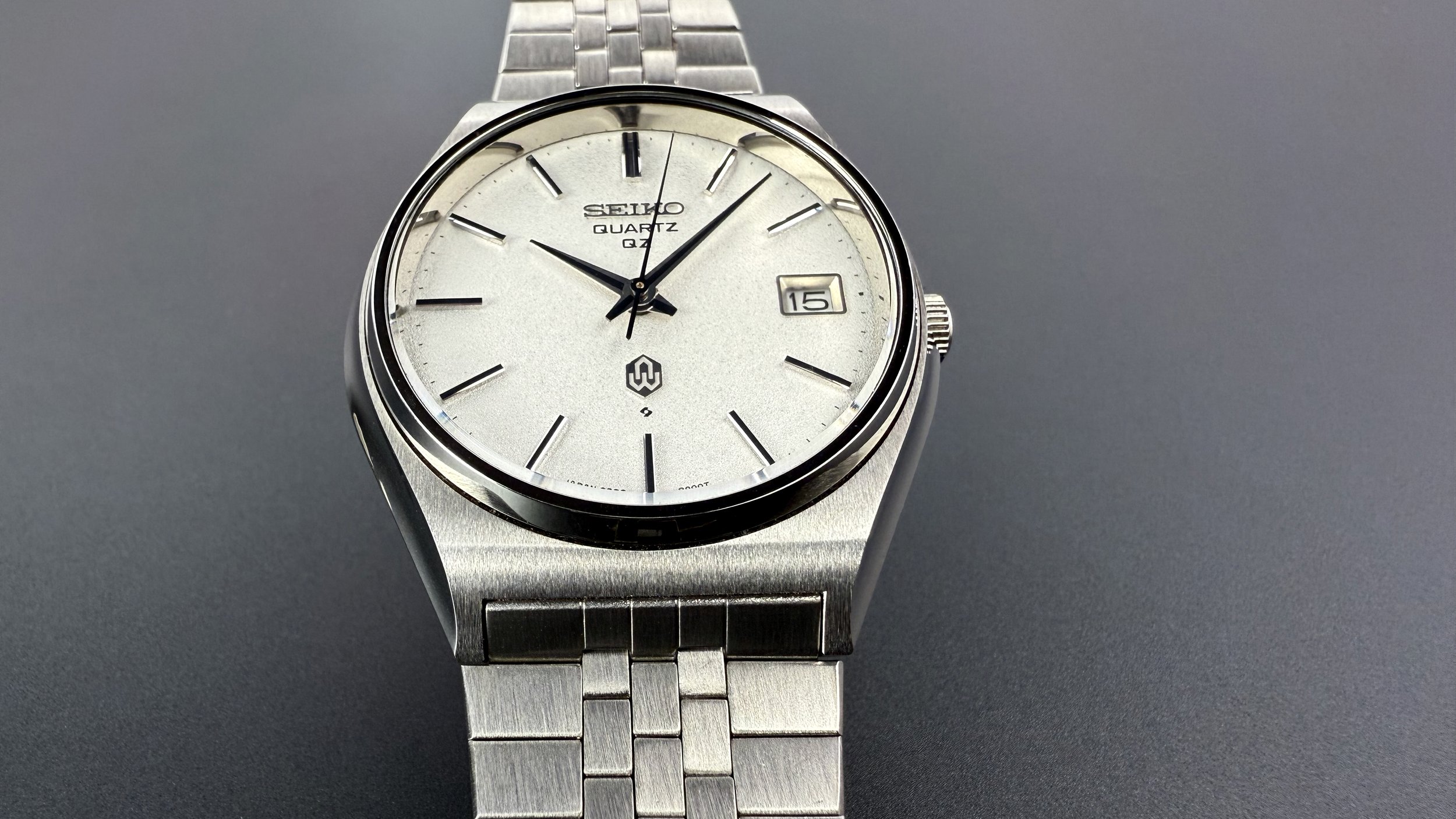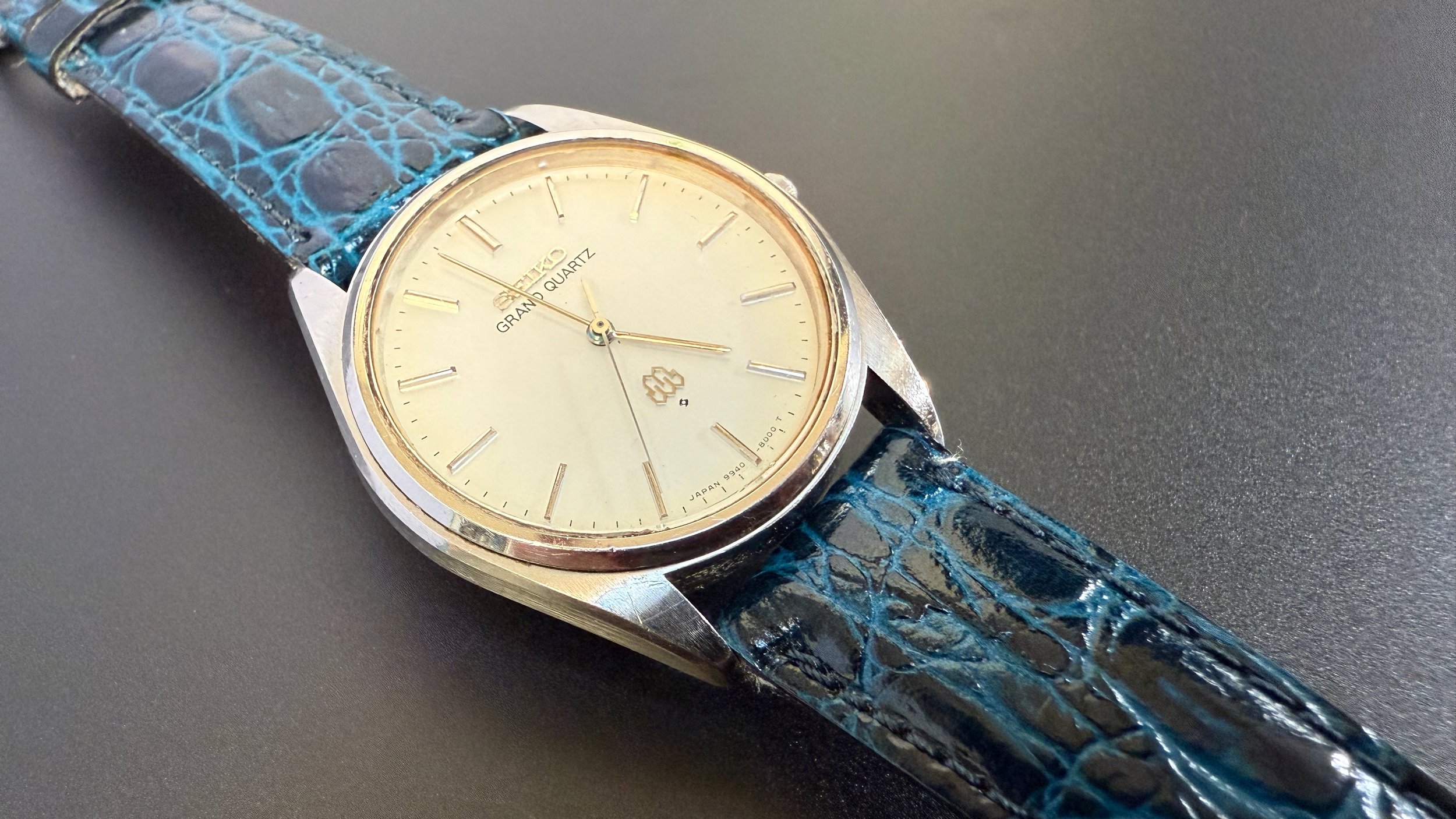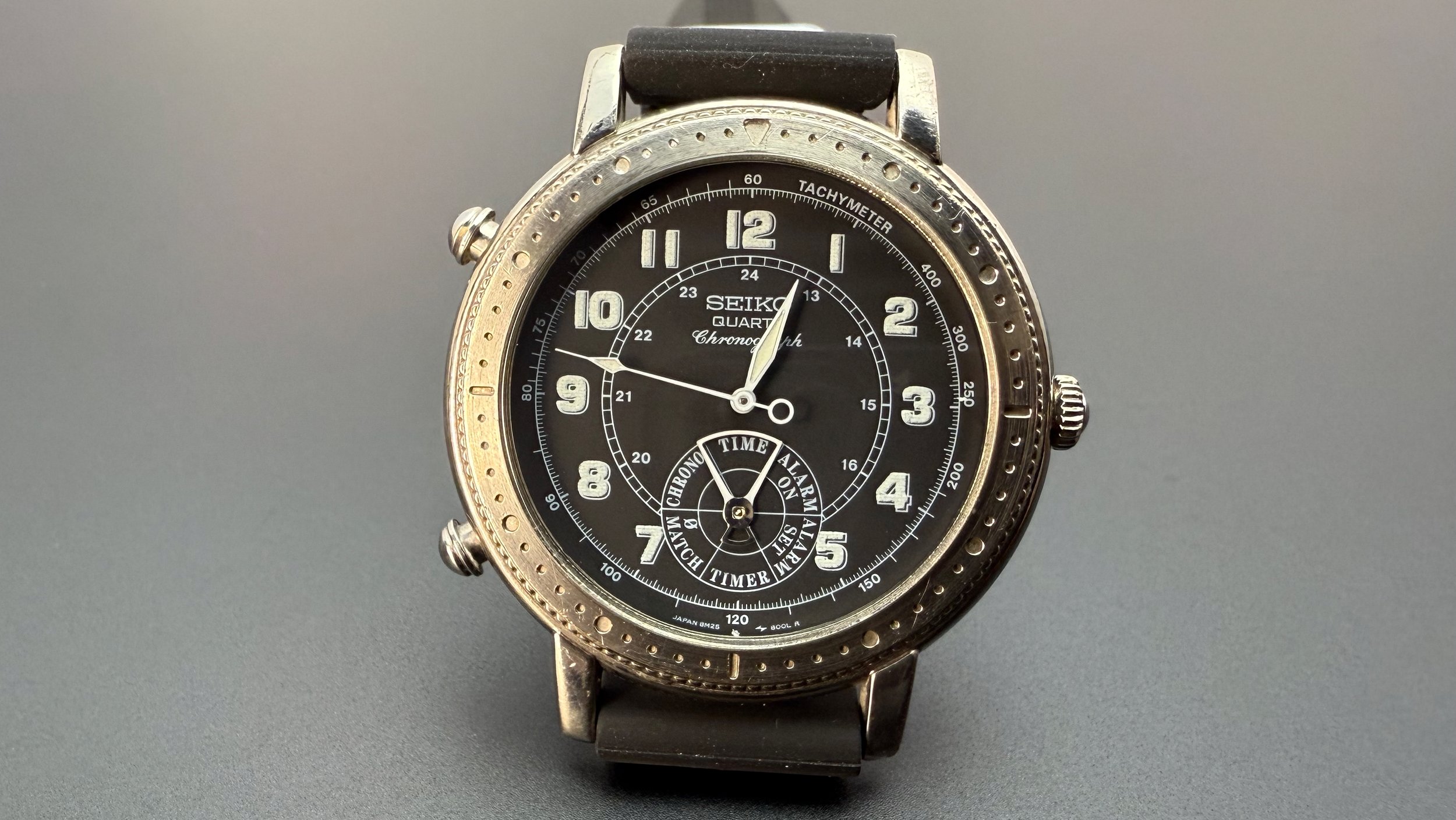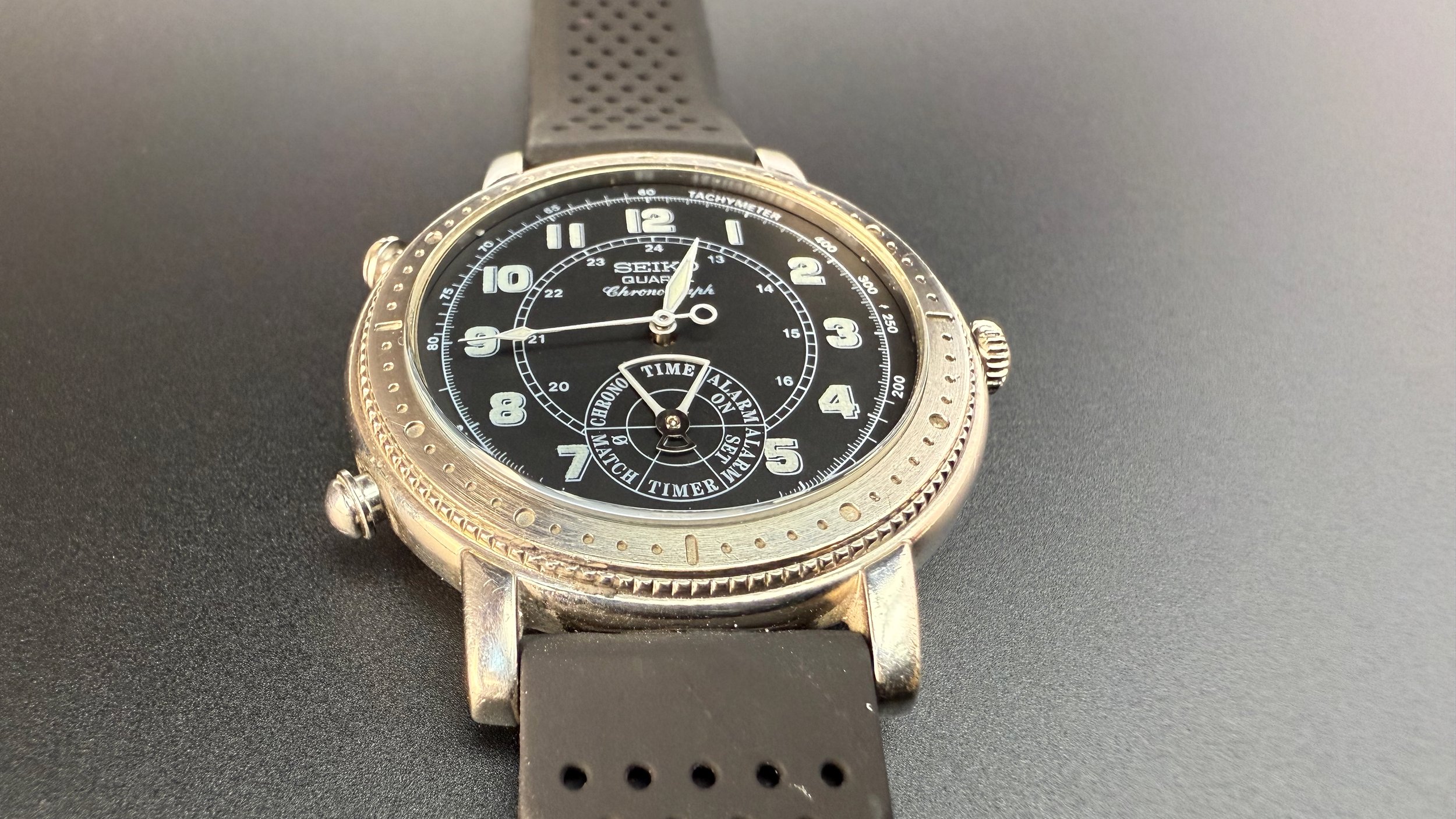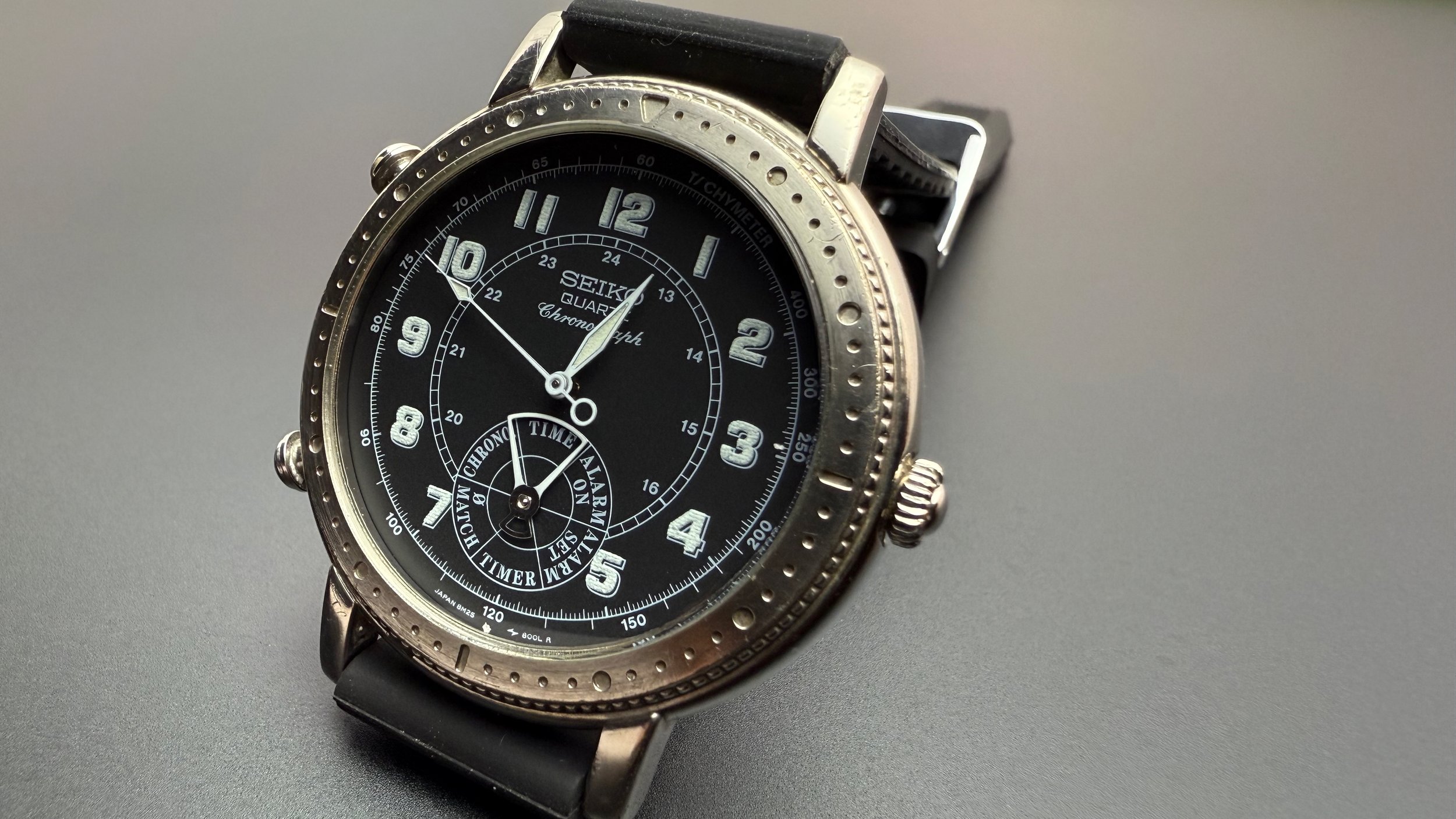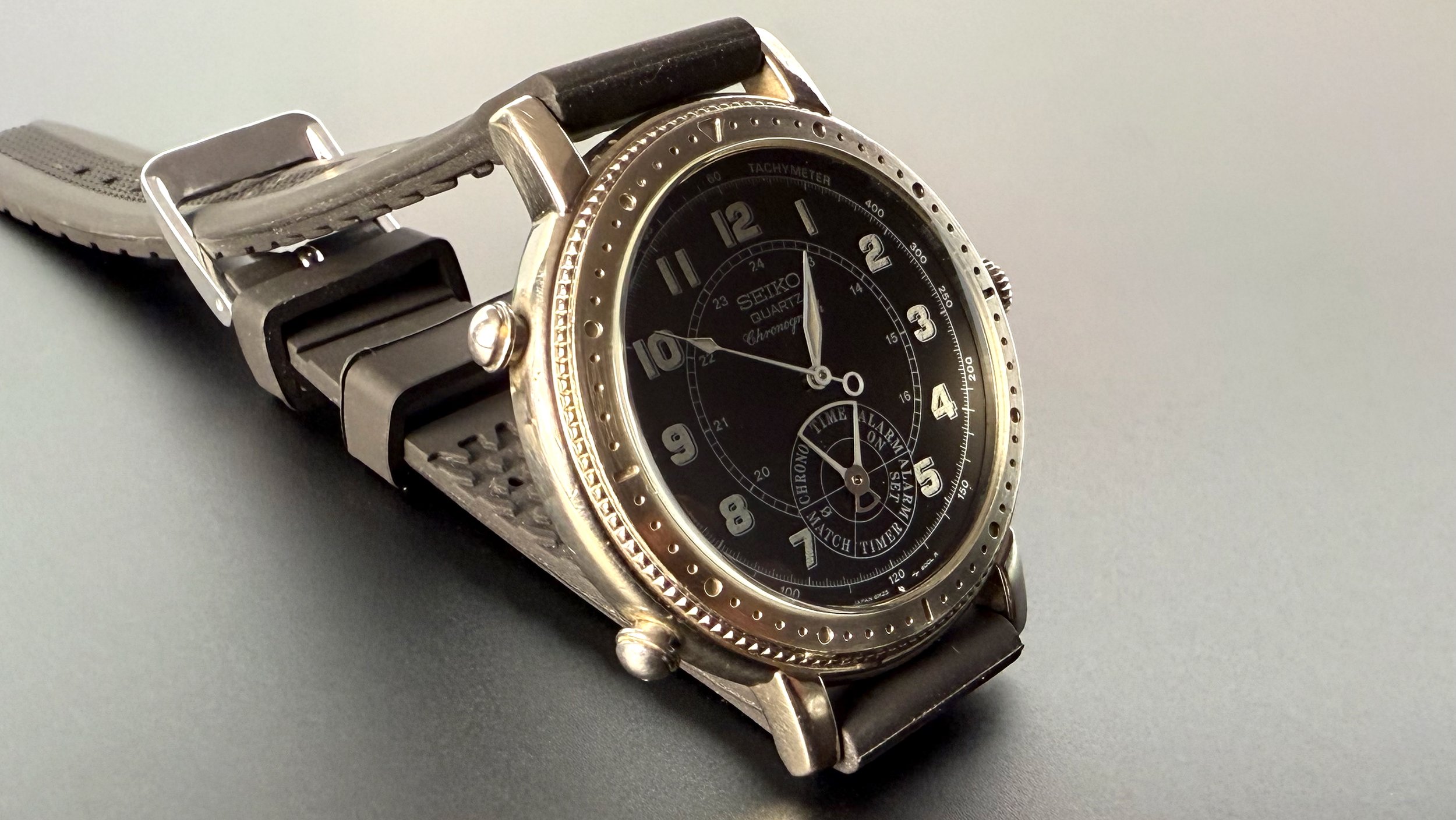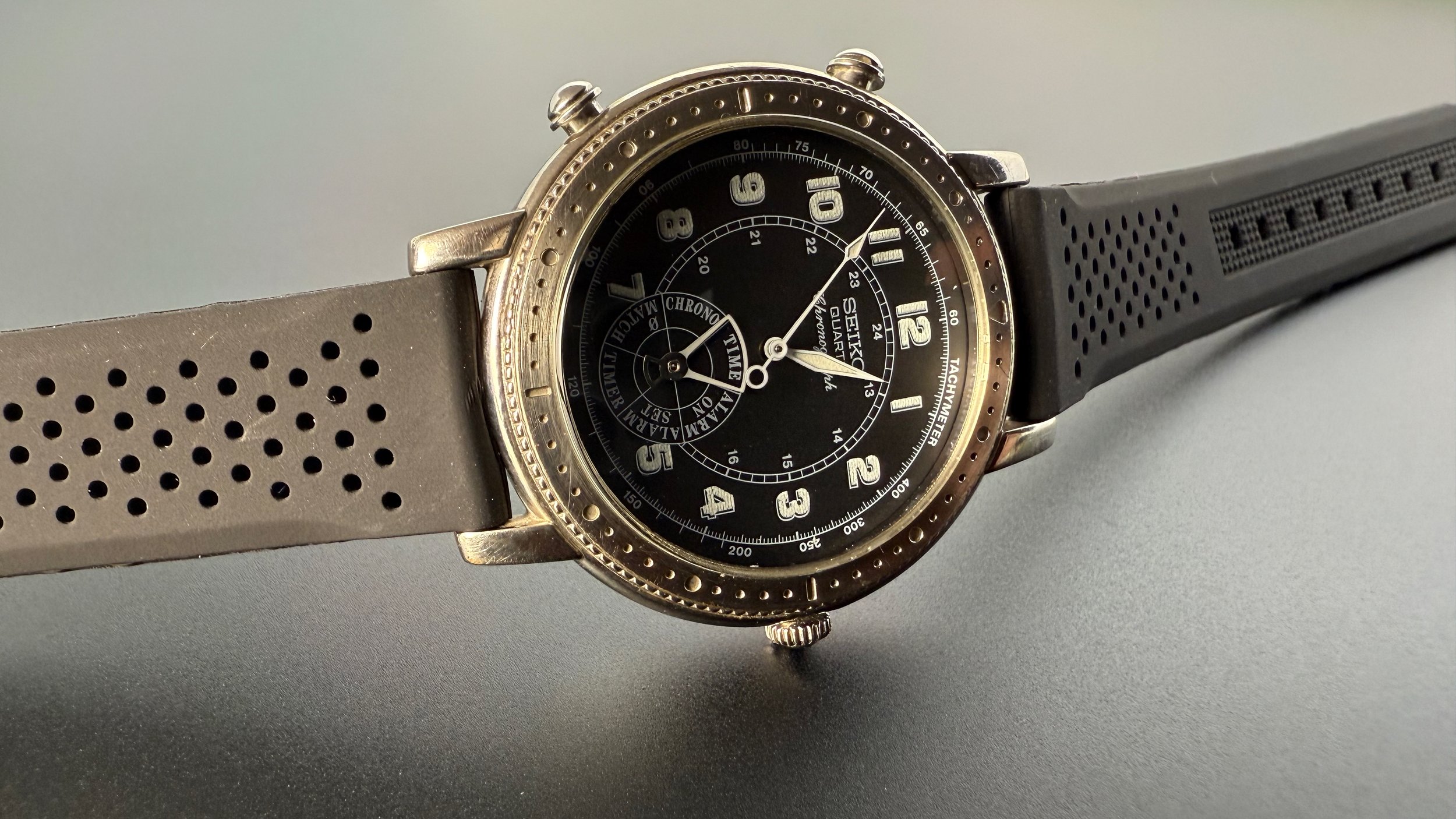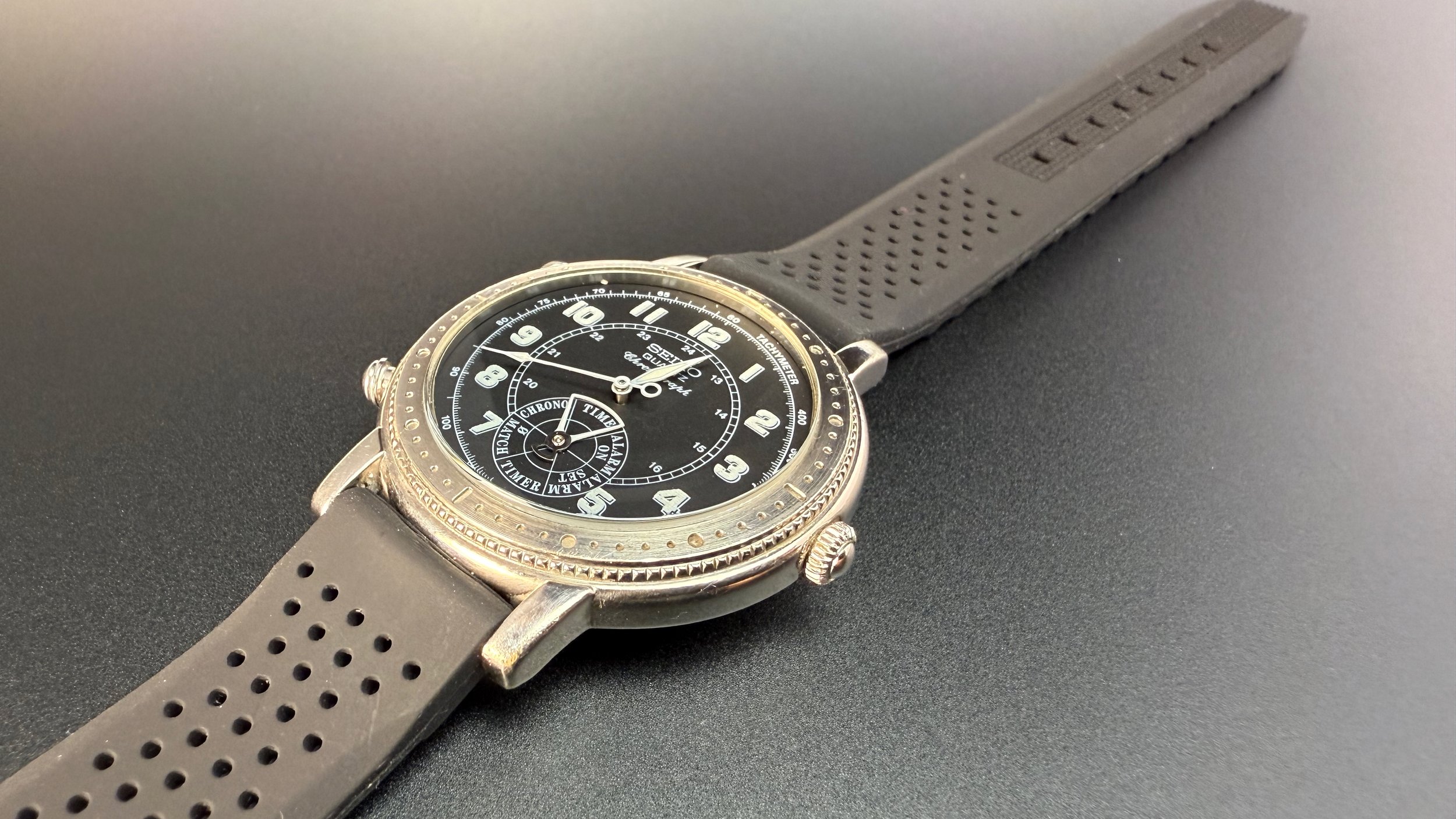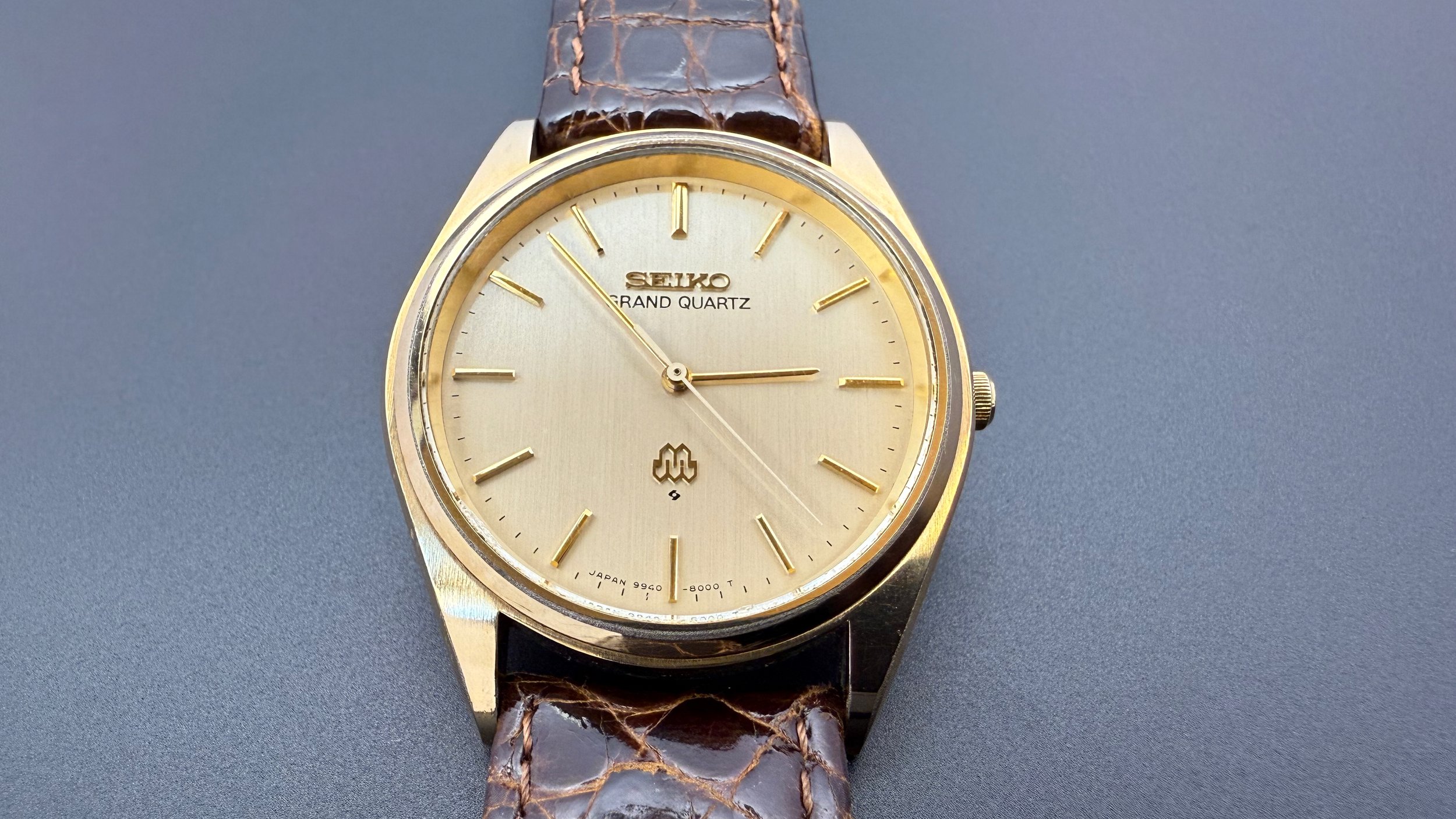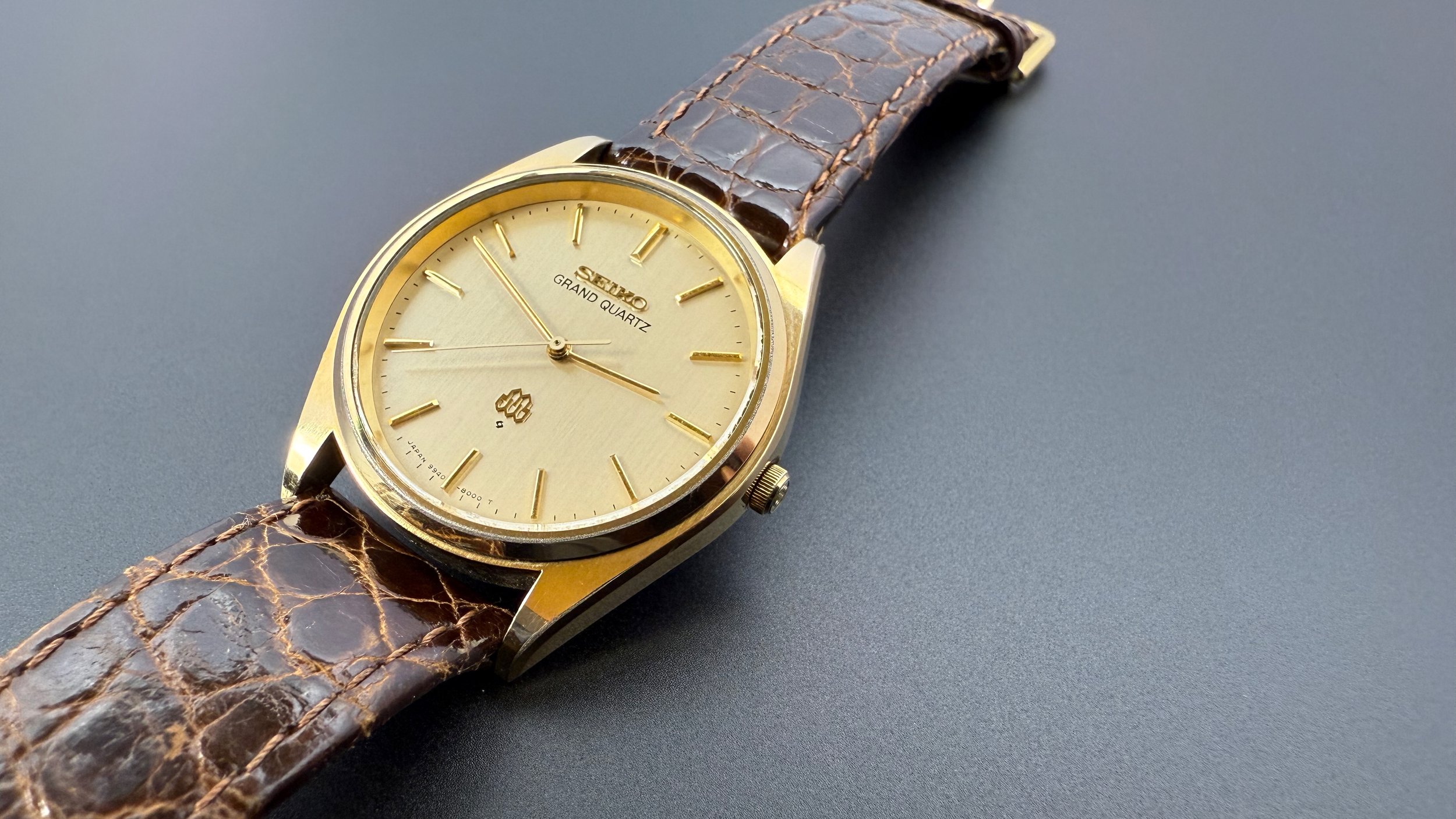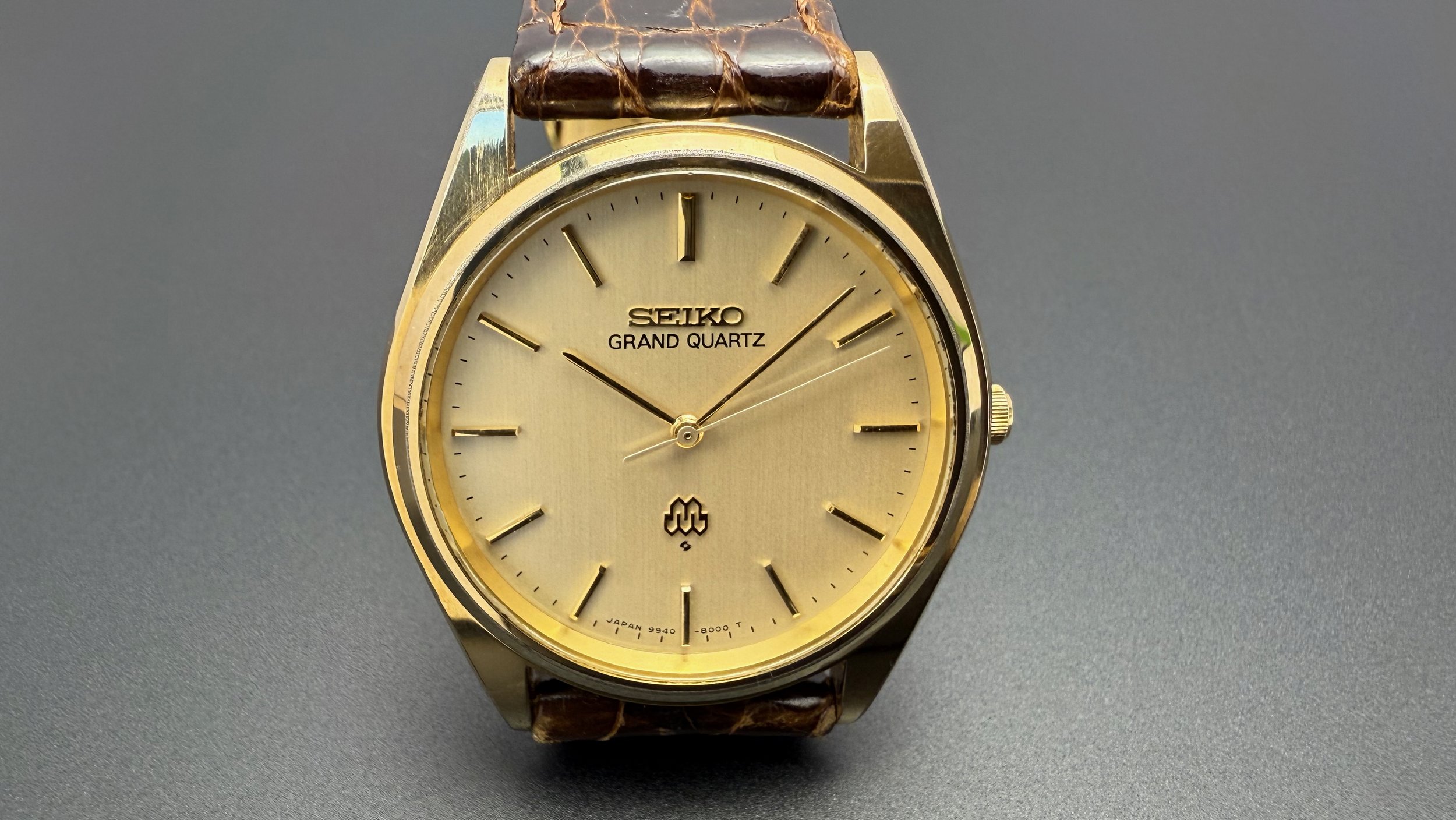
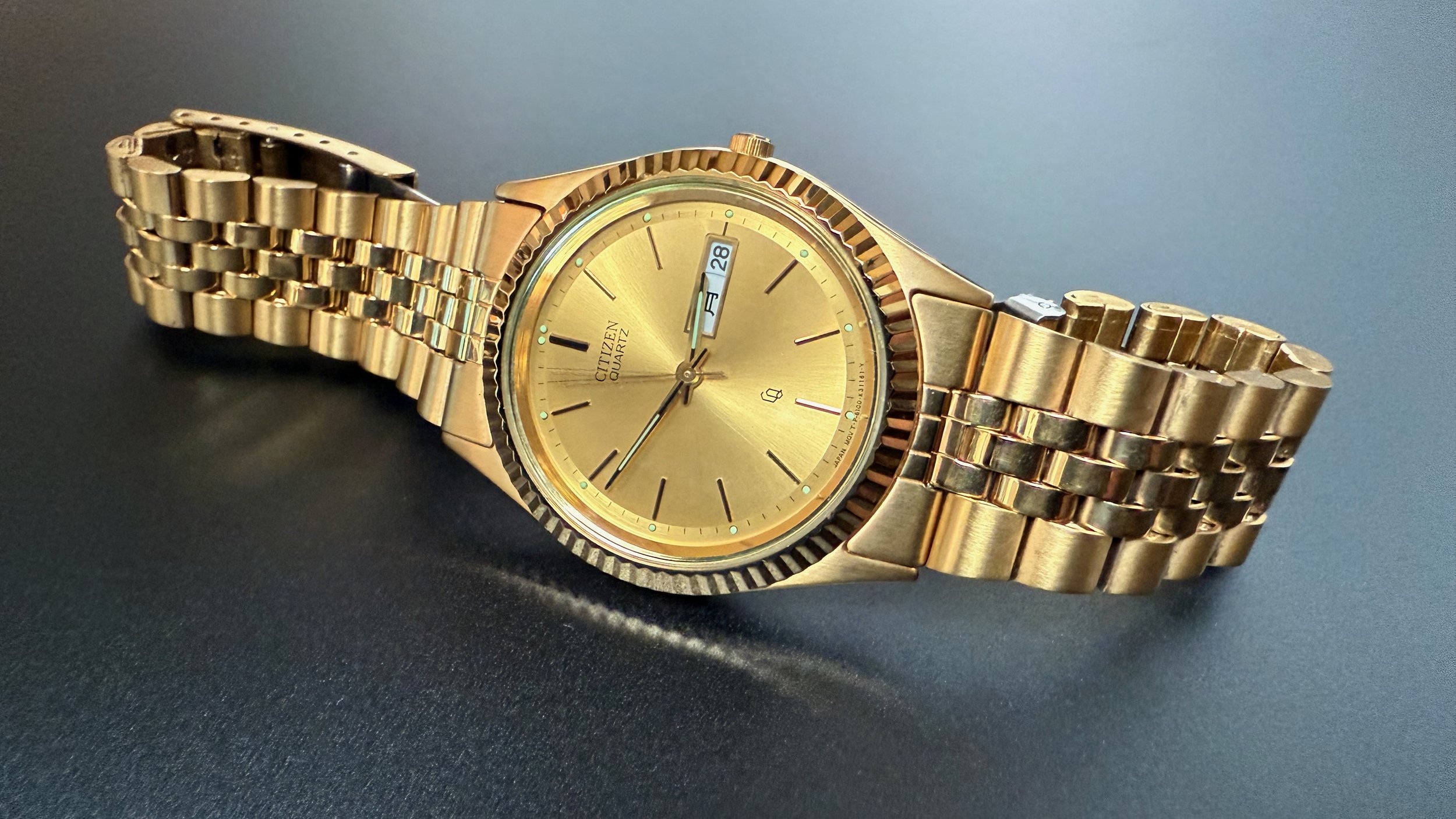
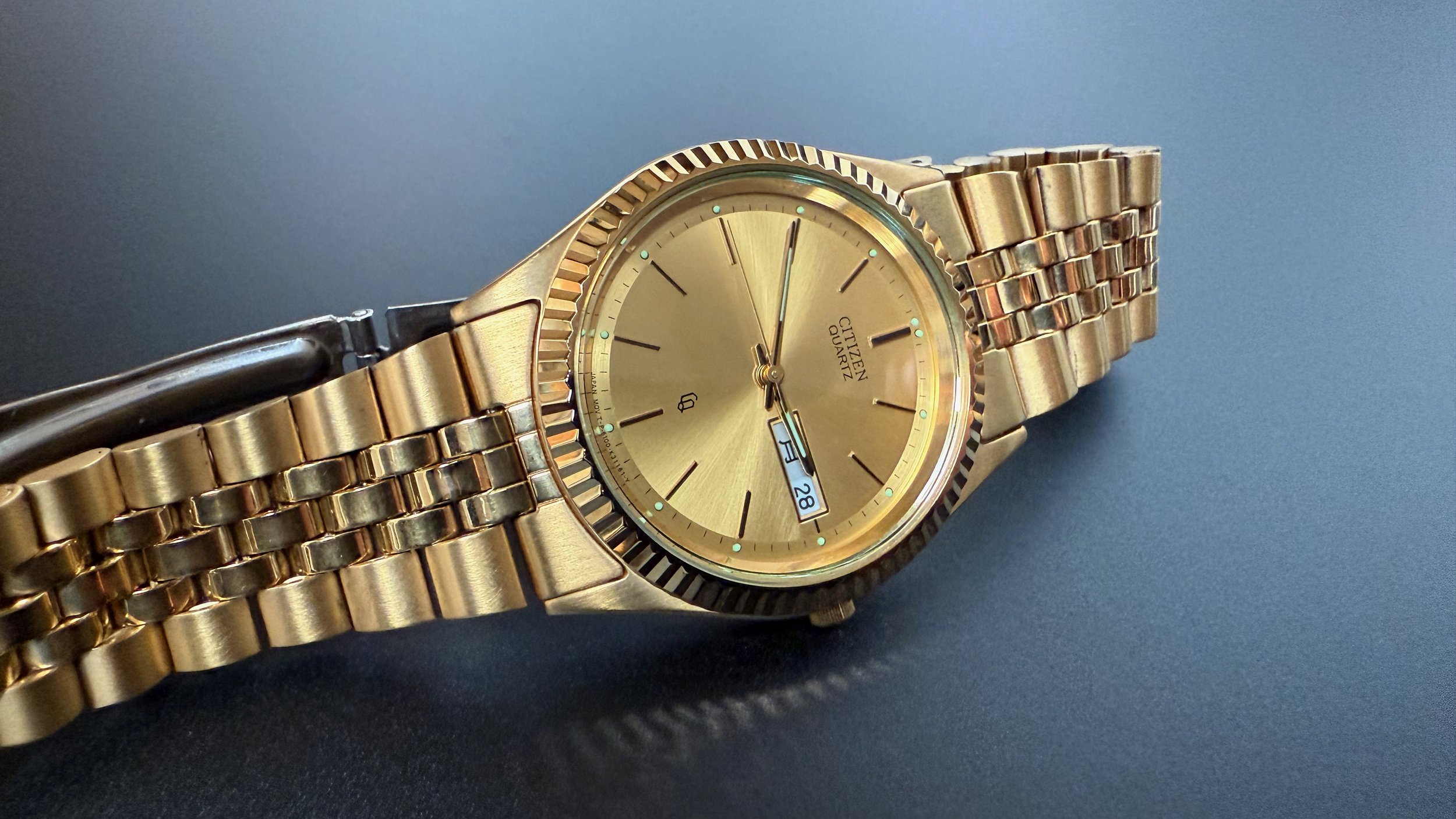
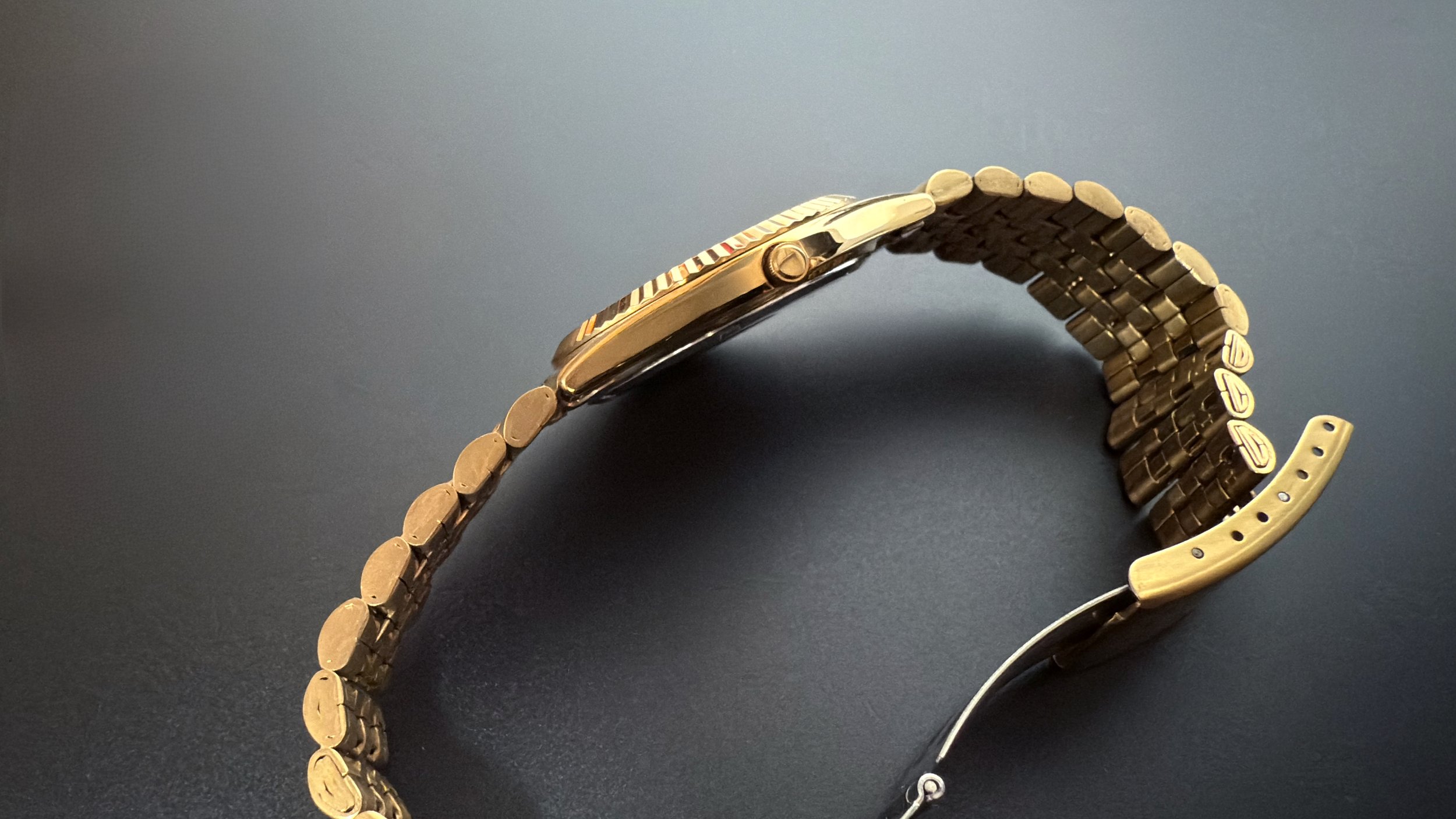
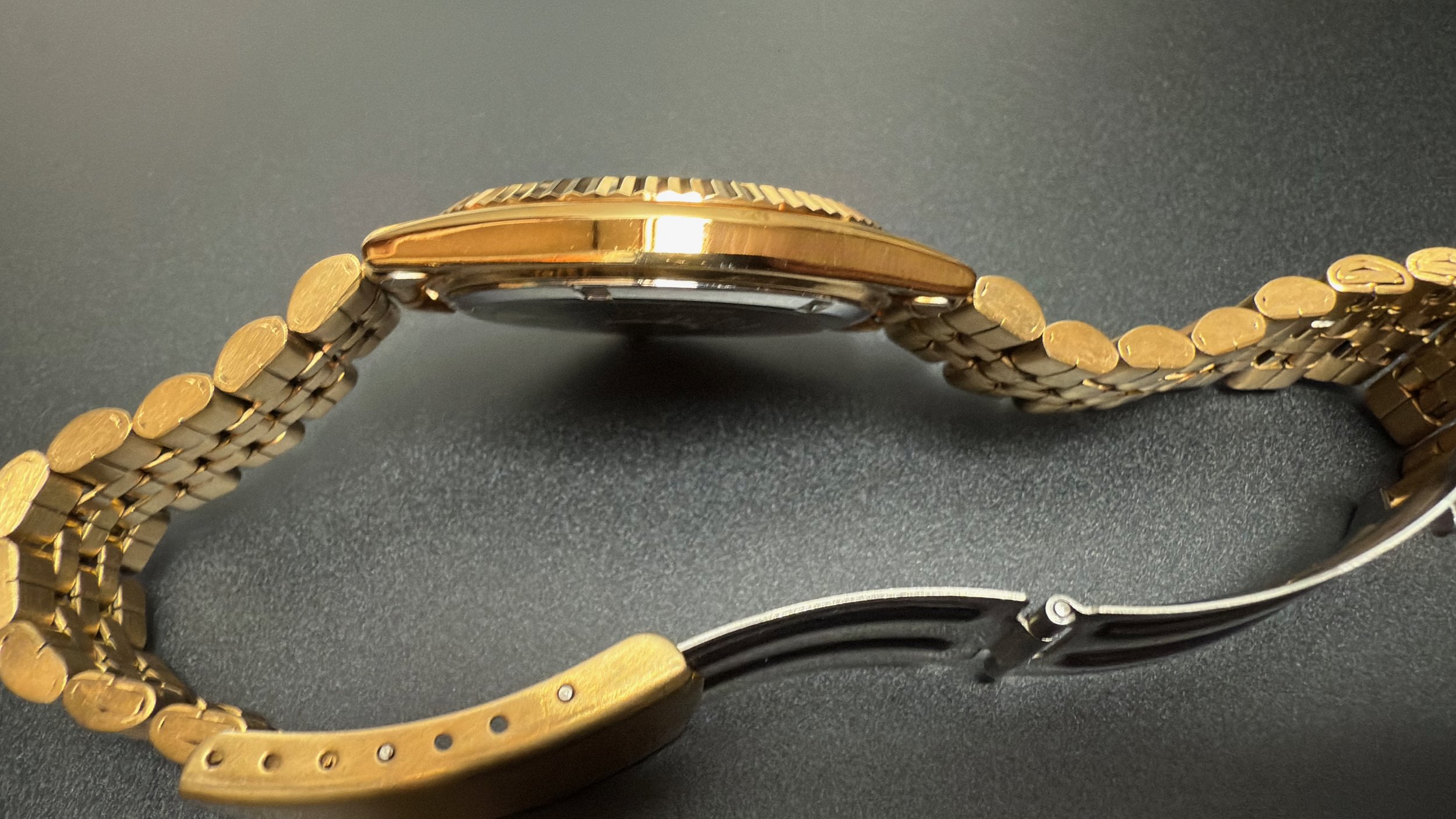

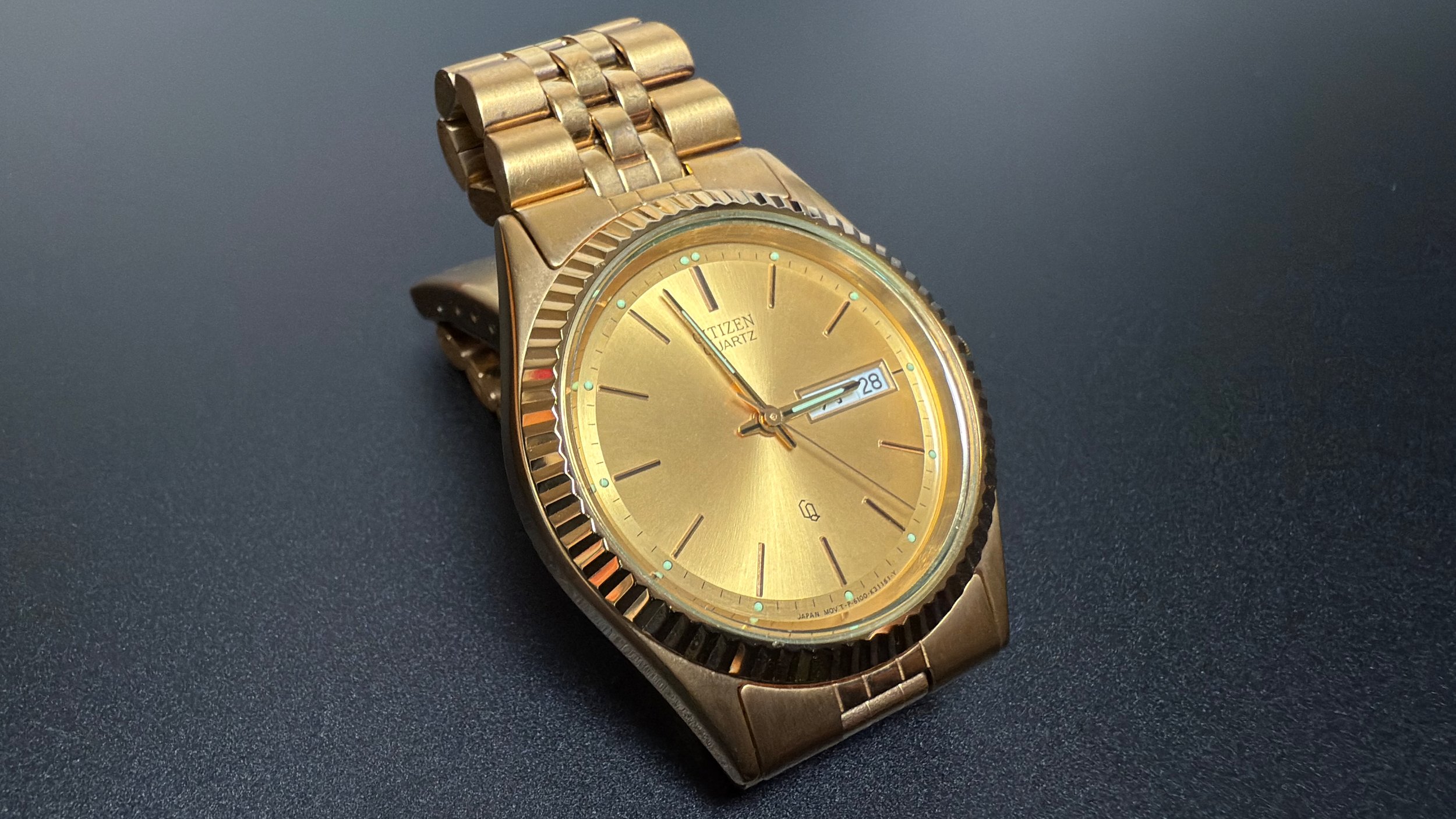
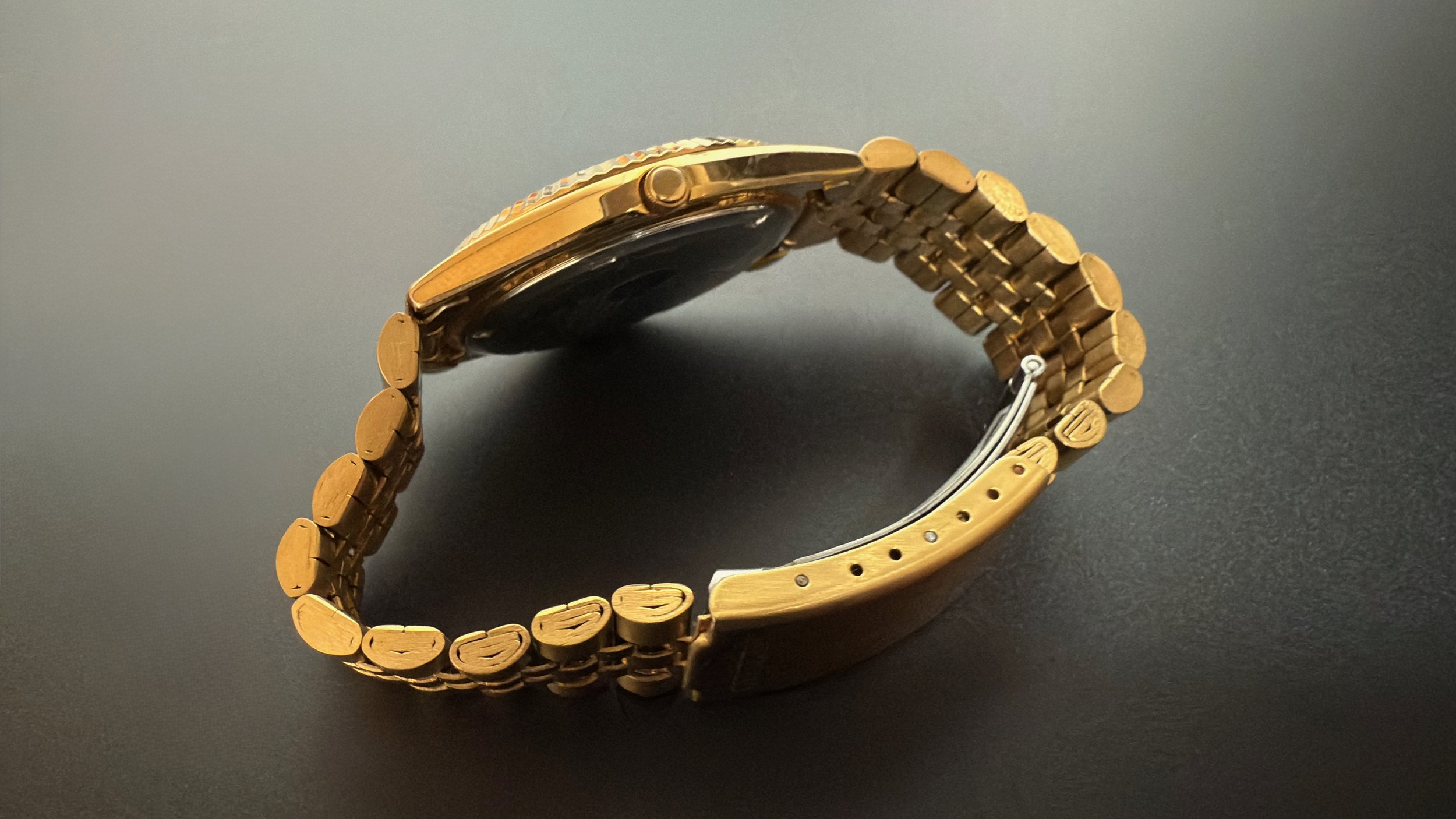
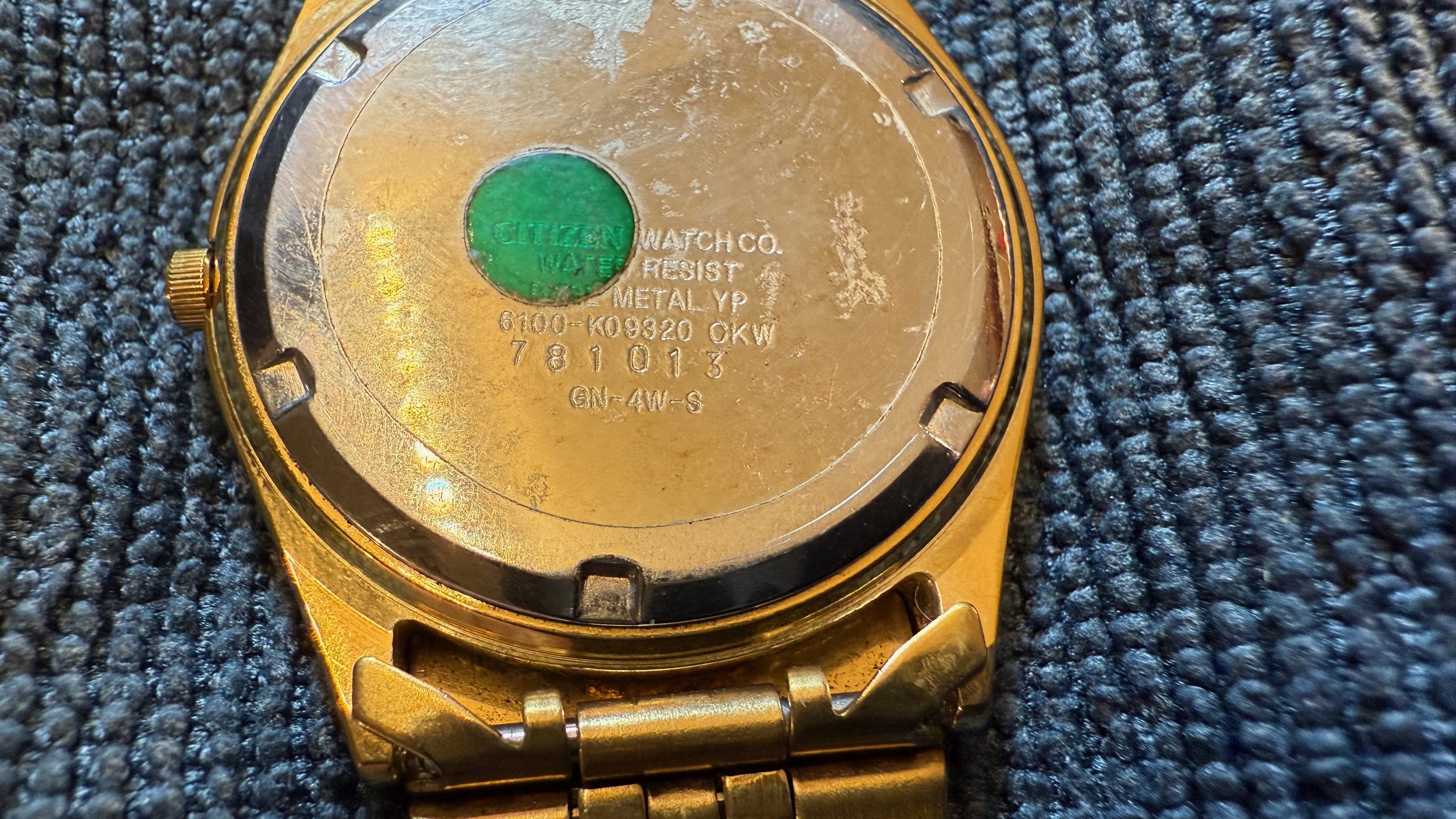
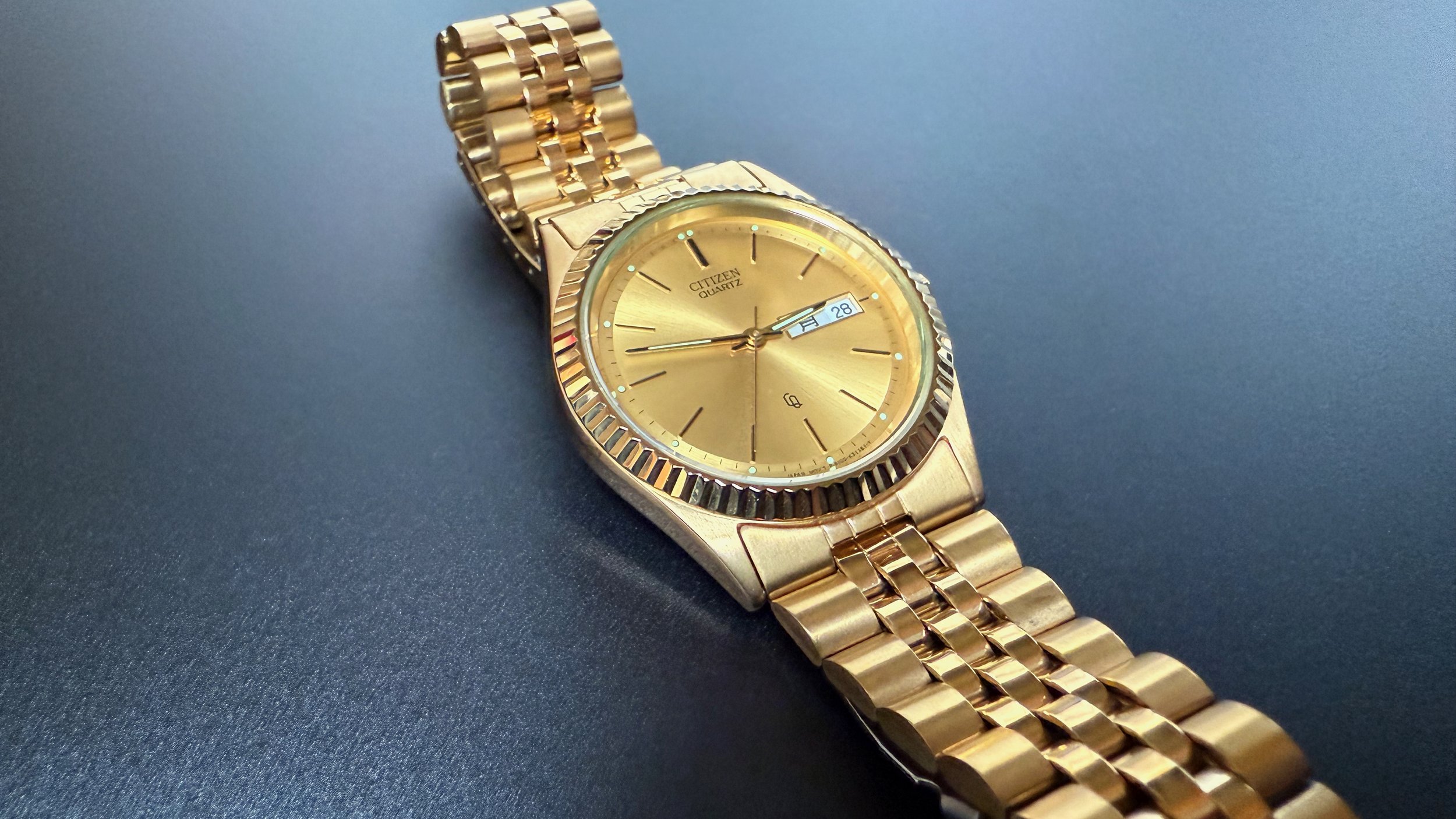
Citizen Crystron 6100-K09320
Tilt for large pics below text
Crystron
Citizen is globally renowned for its high-quality and reliable watches. In particular, during the 1970s and 1980s, the Japanese brand made a significant impact with its quartz technology. The introduction of quartz movements by brands like Citizen and Seiko transformed the watch industry, thanks to the accuracy and cost-effectiveness compared to traditional mechanical watches. In this article, we explore a specific model from the Citizen Quartz series, produced in 1977, and analyze the technical and aesthetic features that make this watch unique.
In 1973, Citizen launched its first quartz watch and named it Crystron. This was in response to Seiko’sAstron of course and the two brands competed well into the next decade across model genres.
In 1975 only one such example was the Citizen Crystron Diver, but there were may dress variants and lots of other more different models analog and digital, with alarm, without, but all the way up the scale right to the Crystron 4 Mega.
With the precisely adjusted AT crystal and rated at +-3 sec/year, this ultra accurate very labor intensive, very expensive model with caliber 8650 of which only 3000 were made was Citizen's flagship watch. Depending on the work put into these watches one can also find 4 Mega's rated at +-5 sec/year or +-10 sec/year.. The "cheaper" SS 4 Megas used the 7370D movement, based off the 7300.
This leaves the "ordinary" Crystron as the entry level watch, well suited for the everyday wear and tear in the Japanese office environment. Like the Lord Quartz and possibly the spoofier King Quartz of the late eighties with caliber 9923. Nevertheless, they are still great vintage pieces precisely because of that usage history. Try finding a Crystron, or a Lord Quartz for that matter, in reasonable to good condition as a survivor of the quartz craze era.
Caliber Number 6100
The core of this watch is the Citizen 6100 quartz caliber. This movement was popular for its accuracy and robustness, providing a reliable alternative to the more delicate mechanical watches. Quartz movements, like the 6100 caliber, operate using a piezoelectric quartz oscillator that vibrates at a stable frequency. This ensures exceptionally accurate timekeeping. The Citizen 6100 caliber contributed to the popularity of quartz technology in the 1970s, which was then favored over traditional mechanical watches due to its low maintenance and reliability.
Model Number and Finish
The model number “K09320 CKW” helps us identify this particular design within the Citizen collection. The letters “CKW” possibly denote specific characteristics of the case and design, which often depended on the region and production line. Citizen introduced multiple variants in its quartz line, with this model standing out for its golden dial and finish. The “Metal YP” designation suggests that this watch was made with a metal case and bracelet, likely with a gold-plated layer to achieve the classic gold look.
Serial Number and Production Date
The serial number “781013” provides valuable information about the production period. Citizen typically follows a serial structure where the first digits indicate the production year and month. In this case, the “7” signifies that the watch was manufactured in 1987, and the “8” suggests that production took place in August of that year. This precise dating is essential for collectors who wish to verify the authenticity and production history of their watch.
Water Resistance and Functionality
The case back of the watch is marked “Water Resist,” indicating that it offers a certain level of water resistance. Watches from this period with such markings are typically resistant to light exposure to water, such as hand washing or light rain, but are not designed for intensive underwater use. This classification was common for mid-range quartz watches in the 1970s, focusing on durability for everyday wear.
Code GN-4W-S
The additional code “GN-4W-S” appears to be an internal Citizen code. Such codes are often used to mark specific quality or production standards. Although the exact meaning is not always clear, these codes are commonly used for quality control and traceability in manufacturing.
Aesthetic Features
The design of this Citizen Quartz watch reflects the style of the late 1980s, when gold watches were often symbols of luxury and elegance. This model features a striking golden dial and case, providing a classic, refined appearance. The notched bezel adds an extra visual element, which is not only aesthetically appealing but may also serve a practical function for grip when adjusting the time. The watch further has simple index markers without numerals, a typical characteristic of minimalist watches from that period. Additionally, there is a day and date display on the dial, a popular and practical feature at the time. With this model, Citizen combined functionality and style, making it suitable for both formal occasions and everyday use.
Significance in the Watch Industry
This specific Citizen Quartz model offers a fine example of the technological and design trends of the 1980s. Quartz watches were at the forefront of a revolution within the watch industry, commonly referred to as the “Quartz Crisis.” Mechanical watches, which had previously dominated the market, quickly lost ground to quartz models due to their accuracy, low maintenance, and affordability. Citizen and other Japanese brands, such as Seiko, were pioneers in this shift and played a crucial role in popularizing quartz technology worldwide.
This Citizen Quartz watch is not only a document of its time but also a valuable addition for collectors who appreciate the evolution of the watch industry. It symbolizes the rise of a technology that compelled traditional watchmakers to reconsider their processes and products.
Citizen Crystron 6100-K09320
Tilt for large pics below text
Crystron
Citizen is globally renowned for its high-quality and reliable watches. In particular, during the 1970s and 1980s, the Japanese brand made a significant impact with its quartz technology. The introduction of quartz movements by brands like Citizen and Seiko transformed the watch industry, thanks to the accuracy and cost-effectiveness compared to traditional mechanical watches. In this article, we explore a specific model from the Citizen Quartz series, produced in 1977, and analyze the technical and aesthetic features that make this watch unique.
In 1973, Citizen launched its first quartz watch and named it Crystron. This was in response to Seiko’sAstron of course and the two brands competed well into the next decade across model genres.
In 1975 only one such example was the Citizen Crystron Diver, but there were may dress variants and lots of other more different models analog and digital, with alarm, without, but all the way up the scale right to the Crystron 4 Mega.
With the precisely adjusted AT crystal and rated at +-3 sec/year, this ultra accurate very labor intensive, very expensive model with caliber 8650 of which only 3000 were made was Citizen's flagship watch. Depending on the work put into these watches one can also find 4 Mega's rated at +-5 sec/year or +-10 sec/year.. The "cheaper" SS 4 Megas used the 7370D movement, based off the 7300.
This leaves the "ordinary" Crystron as the entry level watch, well suited for the everyday wear and tear in the Japanese office environment. Like the Lord Quartz and possibly the spoofier King Quartz of the late eighties with caliber 9923. Nevertheless, they are still great vintage pieces precisely because of that usage history. Try finding a Crystron, or a Lord Quartz for that matter, in reasonable to good condition as a survivor of the quartz craze era.
Caliber Number 6100
The core of this watch is the Citizen 6100 quartz caliber. This movement was popular for its accuracy and robustness, providing a reliable alternative to the more delicate mechanical watches. Quartz movements, like the 6100 caliber, operate using a piezoelectric quartz oscillator that vibrates at a stable frequency. This ensures exceptionally accurate timekeeping. The Citizen 6100 caliber contributed to the popularity of quartz technology in the 1970s, which was then favored over traditional mechanical watches due to its low maintenance and reliability.
Model Number and Finish
The model number “K09320 CKW” helps us identify this particular design within the Citizen collection. The letters “CKW” possibly denote specific characteristics of the case and design, which often depended on the region and production line. Citizen introduced multiple variants in its quartz line, with this model standing out for its golden dial and finish. The “Metal YP” designation suggests that this watch was made with a metal case and bracelet, likely with a gold-plated layer to achieve the classic gold look.
Serial Number and Production Date
The serial number “781013” provides valuable information about the production period. Citizen typically follows a serial structure where the first digits indicate the production year and month. In this case, the “7” signifies that the watch was manufactured in 1987, and the “8” suggests that production took place in August of that year. This precise dating is essential for collectors who wish to verify the authenticity and production history of their watch.
Water Resistance and Functionality
The case back of the watch is marked “Water Resist,” indicating that it offers a certain level of water resistance. Watches from this period with such markings are typically resistant to light exposure to water, such as hand washing or light rain, but are not designed for intensive underwater use. This classification was common for mid-range quartz watches in the 1970s, focusing on durability for everyday wear.
Code GN-4W-S
The additional code “GN-4W-S” appears to be an internal Citizen code. Such codes are often used to mark specific quality or production standards. Although the exact meaning is not always clear, these codes are commonly used for quality control and traceability in manufacturing.
Aesthetic Features
The design of this Citizen Quartz watch reflects the style of the late 1980s, when gold watches were often symbols of luxury and elegance. This model features a striking golden dial and case, providing a classic, refined appearance. The notched bezel adds an extra visual element, which is not only aesthetically appealing but may also serve a practical function for grip when adjusting the time. The watch further has simple index markers without numerals, a typical characteristic of minimalist watches from that period. Additionally, there is a day and date display on the dial, a popular and practical feature at the time. With this model, Citizen combined functionality and style, making it suitable for both formal occasions and everyday use.
Significance in the Watch Industry
This specific Citizen Quartz model offers a fine example of the technological and design trends of the 1980s. Quartz watches were at the forefront of a revolution within the watch industry, commonly referred to as the “Quartz Crisis.” Mechanical watches, which had previously dominated the market, quickly lost ground to quartz models due to their accuracy, low maintenance, and affordability. Citizen and other Japanese brands, such as Seiko, were pioneers in this shift and played a crucial role in popularizing quartz technology worldwide.
This Citizen Quartz watch is not only a document of its time but also a valuable addition for collectors who appreciate the evolution of the watch industry. It symbolizes the rise of a technology that compelled traditional watchmakers to reconsider their processes and products.
| About | Youtube | Personal Shopping Assistant |
|---|---|---|
| Manufacture | Citizen | Crystron |
| Model reference | K09320 | |
| Movement | Crystron | |
| Caliber | 6100 | |
| Dial | Gold Sunburst | |
| Case | 36x42x08mm | SGP |
| Lugs | 18mm | |
| Bracelet | oem | |
| Crystal serial # | Unknown | Mineral |
| Timegrapher | Accuracy:+0.3spd | |
| Jewels | 7 | |
| Serial # | 78xxxx | Production: 1987-08 |
| Condition | Excellent | |
| Service | Not required | |
| Box & Papers | No box | No papers |




